Maryland, one of the two states in the country to flip from majority White to majority non-White over the last decade, is now the most diverse state on the East Coast, according to new data from the 2020 Census. Meanwhile, the District of Columbia continued to lose Black residents – an exodus that has accelerated over the last 10 years.
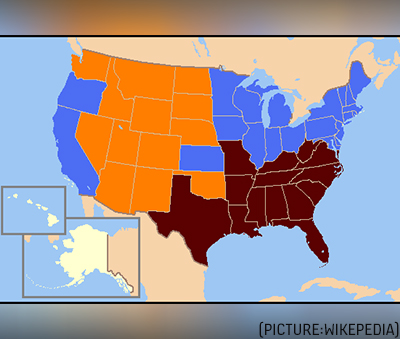 Overall, the region’s population grew by 12.9% to 6.6 million, less than in past decades. Loudoun County led northern Virginia and the metro area with an increase of 38.4%, while in the Maryland suburbs of D.C., Howard County grew the most, 15.8%.
Overall, the region’s population grew by 12.9% to 6.6 million, less than in past decades. Loudoun County led northern Virginia and the metro area with an increase of 38.4%, while in the Maryland suburbs of D.C., Howard County grew the most, 15.8%.
Keeping with national trends that saw the number of White people in the U.S. fall and the White share of the population dip below 60% for the first time since 1790, population growth in the D.C. region has been driven largely by people of color.
According to the U.S. Census Bureau’s diversity index – which measures the likelihood that two people chosen at random would be from different racial and ethnic groups – Maryland is now one of the most diverse states in the nation, surpassed only by Nevada, California and Hawaii.
Nevada also was the only other state in the country to become majority non-White over the last decade. The change in Maryland’s demographic makeup was driven by growing Asian and Latino populations in the District’s inner suburbs and areas around Baltimore. Prince George’s County grew 12% to 967,000.
In northern Virginia, which helped drive population growth for the state overall, Alexandria grew 14% to 160,000 and Arlington grew 14.9% to 239,000. Fairfax grew 6.3% to 1.2 million and Prince William grew 20% to 480,000.
Amid this decade of growth, Fairfax, Prince William and Loudoun saw significant declines in their White population over the last 10 years. Loudoun, in particular, went from 62.4% White in 2010 to 51.5% in 2020.
Fairfax is the latest D.C. suburbs to become majority non-White, joining Prince William in Virginia and Howard, Montgomery and Prince George’s in Maryland.
The only jurisdiction in the area where the White share of the population increased over the last decade was the District.
The city is now Whiter than it has been in more than half a century. The number of residents who identify as White increased 25% since 2010, and in 2020 accounted for 38% of the population, narrowing the gap with the District’s Black population, which declined by nearly 19,000 or 6.3%.
In the place still known by many as “Chocolate City,” just 40.9% of the population identified as Black in the 2020 count – the smallest%age since the 1950 Census when 35% of the District’s population was Black.
Black Washingtonians are still the largest racial group in the District, according to Census numbers, but gains in the White and Hispanic populations drove the city’s overall population growth of 14.6% – or nearly 88,000 people – since 2010.
News assistants run outside the U.S. Supreme Court after the court ruled that U.S. President Donald Trump’s administration did not give an adequate explanation for its plan to add a citizenship question to the 2020 census, delivering a victory to New York state and others challenging the proposal in Washington, U.S., June 27, 2019. REUTERS/Carlos Barria
Andrew Trueblood, the director of the D.C. Office of Planning, said the numbers came as a surprise to District officials and raised questions about the veracity of the 2020 estimates. He and other D.C. officials had been tracking Black population data, including by using estimates from the American Community Survey. The 2020 population numbers, he said, do not seem to match those projections.
“We knew the District of Columbia was at risk of an undercount – and that’s regardless of what happened in the world with a global pandemic,” Trueblood said. “We have a lot of concern that our most vulnerable residents were not counted.”
District officials will be conducting their own analysis, Trueblood added, saying it was “too early” to draw conclusions from the census data release Thursday.
The continued growth of the District’s White population is the ongoing result of more than two decades of gentrification and largely reflects migration patterns from the first half of the last decade, during which White millennials and young professionals flocked to the city as the nation was slowly rebounding from the depths of the Great Recession, said Brookings Institution demographer William Frey.
“Millennials not able to afford a home were doubling and tripling up in cities,” Frey said, adding that trend has “sort of fallen off a bit in the last part of the decade.”
Officials from the D.C. mayor’s office, including the director of the D.C. Office on African American Affairs pointed to Mayor Muriel Bowser’s pledge to pour $400 million into affordable housing production in the District as a key part of her efforts to keep Black residents from being displaced amid rising housing costs. Bowser is herself a fifth-generation Washingtonian, officials said.
Black populations saw significant gains in Maryland in areas such as Anne Arundel, Montgomery, Howard and Charles Counties, where Black residents now make up the largest racial group in the county. In northern Virginia, counties such as Fairfax and Prince William County also saw notable Black growth.
Howard County, which became majority non-White for the first time this past decade, has seen an explosion in its Asian population, which grew more than 60% in the last 10 years. County Executive Calvin Ball, D, pointed to newly established cricket pitches, growing Lunar New Year celebrations, Korean American businesses and the county’s annual hosting of the National Youth Cricket League competition as evidence of Asian Americans’ growing influence in the county.
Ball said that Asian Americans and Hispanics – whose population grew from 5.8% to 8.2% over the last decade – want to live in communities where they feel safe and supported.
He pointed to Howard County’s decision to join a lawsuit against the Trump administration over its decision to exclude undocumented immigrants from the apportionment count that dictates how congressional districts are drawn as one of the ways the county has sought to stand up for immigrants in those communities.
In Prince George’s County, long known as a Black stronghold and one of the most affluent Black communities in the nation, the Hispanic population grew from 14.9% in 2010 to 21.2% last year – gains that helped drive the county’s growth over the past decade. Black people still makeup the largest population in the county with 59.1% – a decline from 63.5% a decade ago.
Prince George’s County Council Vice Chair Deni Taveras, the first Latina ever elected to that body, said the Latino population has shifted from being a largely immigrant community to now containing multiple generations, including second and third generations of Marylanders.
Demographers noted that this is true of the country, as well.
According to Frey, “most of the Hispanic population we’re seeing are U.S.-born. Only a third of Hispanics are at this point foreign born, so the increases are really due to naturally increases in the U.S. population, not so much from immigration.”
Taveras said the county has a long way to go in making its Latino residents feel as if they are “a part of the fold” and included in leadership.
“A Latino child can go from kindergarten to college in our school system without ever seeing one Latino professional who looks like them. That’s unacceptable,” she said. “Our leaders in Maryland need to understand that these are not just new Americans who are moving here. These are children who grew up here and families having children. . . . We’re talking about Latinos who have lived here for generations. That’s not really the conversation we’ve been having.”
Maryland joins five other states, the District and Puerto Rico in having people of color comprise the majority of their population: California, Hawaii, Texas, Nevada and New Mexico.
“This is a trend that we’ve expecting for a while now, and it’s something that we should be really proud of,” said Maryland state delegate Jheanelle Wilkins (D-Montgomery), who served on the statewide Complete Count Committee that oversaw Census efforts last year.
Montgomery County grew by 9.3% to 1.1 million. “Wow, Montgomery! Look at us!” Wilkins quipped as she reviewed the numbers Thursday. “Maryland is more and more reflective of the country, we are a state where we have a high immigrant population, where immigrants like myself – I was born in Kingston, Jamaica – come to from all over the world. . . . and you’re seeing us take the lead on issues that affect all of our diverse populations in really meaningful and targeted ways, and this data – knowing where our diverse populations are – really helps us do that.”
In Virginia, Fairfax County’s population of White residents dropped from 54.6% in 2010 to 47.1% in 2020, with gains among the Asian and Hispanic communities, which comprise about 20.4% and 17.3% of the county, respectively.
Outside of New York City and California, Fairfax County is now the largest county in the U.S. to have an Asian population of at least 20%. State delegate Kathy Tran, D-Fairfax, pointed to changes in the state government, including the creation of an AAPI Caucus and pro-immigrant legislation, as evidence of Virginia’s evolving diversity.
“Virginia is so steeped in history and the conversation around race relations in our state has rightly centered around Black Virginians in the last 400-plus years since the start of this commonwealth, but I think there is always opportunity for additional voices and perspectives to be heard,” Tran said. “We still had until the last couple of years Jim Crow laws that were still embedded into our code, and so we’re dismantling that at the same time as we’re pushing for immigrant justice, for example.”
Tran added that there is still “a ways to go” in building political capital among the state’s Asian and Latino communities and “making sure our voices are heard,” but added she hopes the new census data demonstrates to all Virginians why efforts to do so are necessary.
 The disease is the most prevalent form of cancer globally and has become a major problem in India, where breast cancer accounts for 25% to 31% of all cancers.
The disease is the most prevalent form of cancer globally and has become a major problem in India, where breast cancer accounts for 25% to 31% of all cancers.
 After a brief introduction to the organization by ASEI executive council member Vatsala Upadhyay, and a tribute to design maestro Steve Jobs marking the 10th anniversary of his passing, ASEI President Piyush Malik shared his forward-thinking views on Design based on his field experiences and learnings working with nimble Silicon Valley startups as well as fortune 500 corporations around the globe. These opening remarks centered around the importance of Design as a discipline and Design Thinking methodologies adapted from IDEO, Stanford’s
After a brief introduction to the organization by ASEI executive council member Vatsala Upadhyay, and a tribute to design maestro Steve Jobs marking the 10th anniversary of his passing, ASEI President Piyush Malik shared his forward-thinking views on Design based on his field experiences and learnings working with nimble Silicon Valley startups as well as fortune 500 corporations around the globe. These opening remarks centered around the importance of Design as a discipline and Design Thinking methodologies adapted from IDEO, Stanford’s  The $20 copay was well worth it for the 26-year-old ad salesman, whose girlfriend also routinely relies on telehealth to see her nutritionist. “It’s a very easy way to get an expert opinion without having to necessarily leave your apartment,” fill out forms or spend idle time in waiting rooms, Freyre says. “We all know what going to the doctor can be like.”But now, Freyre has a sore knee — and he’s not content to to visit his doctor by phone or Zoom. “That’s something that I will 100% want handled in person.”
The $20 copay was well worth it for the 26-year-old ad salesman, whose girlfriend also routinely relies on telehealth to see her nutritionist. “It’s a very easy way to get an expert opinion without having to necessarily leave your apartment,” fill out forms or spend idle time in waiting rooms, Freyre says. “We all know what going to the doctor can be like.”But now, Freyre has a sore knee — and he’s not content to to visit his doctor by phone or Zoom. “That’s something that I will 100% want handled in person.” The first female governor of the great state of New York thanbked the organiZers and leaders of the Indian American community: “I want to just thank Uma SenGupta for all you’ve done for us, and to your family, your mother, and the influence of your late father – you are the reason why we celebrate today, people like you who came to this country humbly, not sure of what the future would bring, but you always had that deep rooted faith in your traditions and to know that Diwali followed you to this country, that you had this light within your heart that you could bring to America and let shine and let all of us gather here in honor of the Goddess Lakshmi. Many of the traditions honor the male gods but this is one that’s dedicated to women so I think this is particularly special as well. Dr. Sumita Sengupta, I want to thank you as well. Randhir Jaiswal, the Consul General, is here as well. Dr. Hari Shukla, I want to thank him for making me feel so welcome, the founder of South Asians of New York.”
The first female governor of the great state of New York thanbked the organiZers and leaders of the Indian American community: “I want to just thank Uma SenGupta for all you’ve done for us, and to your family, your mother, and the influence of your late father – you are the reason why we celebrate today, people like you who came to this country humbly, not sure of what the future would bring, but you always had that deep rooted faith in your traditions and to know that Diwali followed you to this country, that you had this light within your heart that you could bring to America and let shine and let all of us gather here in honor of the Goddess Lakshmi. Many of the traditions honor the male gods but this is one that’s dedicated to women so I think this is particularly special as well. Dr. Sumita Sengupta, I want to thank you as well. Randhir Jaiswal, the Consul General, is here as well. Dr. Hari Shukla, I want to thank him for making me feel so welcome, the founder of South Asians of New York.” Shri Muraleedharan, who officially took charge as Minister of State for External Affairs and Minister of State for Parliamentary Affairs in May 2019, is visiting the United States to address the United Nations. He took the opportunity to travel to Connecticut to “listen” directly to the Diaspora and address their concerns. “I’ve been in charge of the External Affairs Ministry for the last 2 years. I was feeling that there is a need for interaction with the Diaspora. And this forum is a place where people have an opportunity to share their problems and concerns,” he told the audience. While assuring the community that he has listened to the concerns of the Diaspora, he will address each one of them and find an amicable solution.
Shri Muraleedharan, who officially took charge as Minister of State for External Affairs and Minister of State for Parliamentary Affairs in May 2019, is visiting the United States to address the United Nations. He took the opportunity to travel to Connecticut to “listen” directly to the Diaspora and address their concerns. “I’ve been in charge of the External Affairs Ministry for the last 2 years. I was feeling that there is a need for interaction with the Diaspora. And this forum is a place where people have an opportunity to share their problems and concerns,” he told the audience. While assuring the community that he has listened to the concerns of the Diaspora, he will address each one of them and find an amicable solution. Among others who attended the Reception and the Interactive Session with the Honorable Minister Shri V. Muraleedharan, included, Deputy Consul General of Indian in New York, Dr. Varun Jeph; Consul for Community Affairs at the Indian Consulate Mr. A.K.Vijayakrishan; CT Assemblyman Harry Arora, several community organizations including Milan cultural Association President Suresh Sharma; Past President of the Federation of Indian Associations of New York, New Jersey and CT, Andy Bhatia; CT Tamil Sangam President Shivakumar Subramaniam and past president Uma Sekhar; CT Telugu Association Past President Rao Yelamachali; Malayalee Association of Southern Connecticut President T.P. Sujanan; GOPIO Media Council Chair Nami Kaur; Sabinsa Corporation President Dr. Asha Ramesh; and former Provost and Vice President of Academic affairs of GOPIO, Dr. Rupendra Paliwal.
Among others who attended the Reception and the Interactive Session with the Honorable Minister Shri V. Muraleedharan, included, Deputy Consul General of Indian in New York, Dr. Varun Jeph; Consul for Community Affairs at the Indian Consulate Mr. A.K.Vijayakrishan; CT Assemblyman Harry Arora, several community organizations including Milan cultural Association President Suresh Sharma; Past President of the Federation of Indian Associations of New York, New Jersey and CT, Andy Bhatia; CT Tamil Sangam President Shivakumar Subramaniam and past president Uma Sekhar; CT Telugu Association Past President Rao Yelamachali; Malayalee Association of Southern Connecticut President T.P. Sujanan; GOPIO Media Council Chair Nami Kaur; Sabinsa Corporation President Dr. Asha Ramesh; and former Provost and Vice President of Academic affairs of GOPIO, Dr. Rupendra Paliwal. “India is fully democratic. Judiciary is independent. Media is free. There is no substance to claims that the media is controlled” by the government, declared Shri V. Muraleedharan, who is visiting the United States to address the United Nations.
“India is fully democratic. Judiciary is independent. Media is free. There is no substance to claims that the media is controlled” by the government, declared Shri V. Muraleedharan, who is visiting the United States to address the United Nations. Among others who attended the Reception and the Interactive Session with the Honorable Minister Shri V. Muraleedharan, included, Deputy Consul General of Indian in New York, Dr. Varun Jeph; Consul for Community Affairs at the Indian Consulate Mr. A.K.Vijayakrishan; CT Assemblyman Harry Arora, several community organizations including Milan cultural Association President Suresh Sharma; Past President of the Federation of Indian Associations of New York, New Jersey and CT, Andy Bhatia; CT Tamil Sangam President Shivakumar Subramaniam and past president Uma Sekhar; CT Telugu Association Past President Rao Yelamachali; Malayalee Association of Southern Connecticut President T.P. Sujanan; GOPIO Media Council Chair Nami Kaur; Sabinsa Corporation President Dr. Asha Ramesh; and former Provost and Vice President of Academic affairs of GOPIO, Dr. Rupendra Paliwal.
Among others who attended the Reception and the Interactive Session with the Honorable Minister Shri V. Muraleedharan, included, Deputy Consul General of Indian in New York, Dr. Varun Jeph; Consul for Community Affairs at the Indian Consulate Mr. A.K.Vijayakrishan; CT Assemblyman Harry Arora, several community organizations including Milan cultural Association President Suresh Sharma; Past President of the Federation of Indian Associations of New York, New Jersey and CT, Andy Bhatia; CT Tamil Sangam President Shivakumar Subramaniam and past president Uma Sekhar; CT Telugu Association Past President Rao Yelamachali; Malayalee Association of Southern Connecticut President T.P. Sujanan; GOPIO Media Council Chair Nami Kaur; Sabinsa Corporation President Dr. Asha Ramesh; and former Provost and Vice President of Academic affairs of GOPIO, Dr. Rupendra Paliwal. Rep. Krishnamoorthi, said he joins the many Hindu faithful in the United States in recognizing October as Hindu Heritage Month. Several Hindu organizations in the U.S., including Vishwa Hindu Parishad of America (VHPA), have declared October as Hindu Heritage Month, and several states including New Jersey, Delaware, Ohio, Texas, Florida, Nevada, North Carolina, Minnesota, Virginia and Massachusetts have proclaimed October as Hindu Heritage Month, according to the website hindumonth.org, as have several cities like Dallas, TX, and La Palma, CA.
Rep. Krishnamoorthi, said he joins the many Hindu faithful in the United States in recognizing October as Hindu Heritage Month. Several Hindu organizations in the U.S., including Vishwa Hindu Parishad of America (VHPA), have declared October as Hindu Heritage Month, and several states including New Jersey, Delaware, Ohio, Texas, Florida, Nevada, North Carolina, Minnesota, Virginia and Massachusetts have proclaimed October as Hindu Heritage Month, according to the website hindumonth.org, as have several cities like Dallas, TX, and La Palma, CA. TiECON East, which is organized by TiE Boston, was be held in-person on Oct. 1 at the Westin Hotel in Waltham, MA. All attendees were required to be fully vaccinated and to fully adher to the CDC health guidelines. Major sponsors of the conference included Amazon, Microsoft, Vertex Pharmaceuticals, Arent Fox, Converge, Sittercity, Innospark, Thread Research, Progress and Embark.
TiECON East, which is organized by TiE Boston, was be held in-person on Oct. 1 at the Westin Hotel in Waltham, MA. All attendees were required to be fully vaccinated and to fully adher to the CDC health guidelines. Major sponsors of the conference included Amazon, Microsoft, Vertex Pharmaceuticals, Arent Fox, Converge, Sittercity, Innospark, Thread Research, Progress and Embark. “Harnessing the power of Indian Doctors worldwide, the AAPI Global Healthcare Summit platform has evolved with the support of prominent global and Indian medical associations,” says Dr. Anupama Gotimukula, President of AAPI. “The theme for the Summit this year is, ‘Prevention Is Better Than Cure Through Technology, Telemedicine & Transformation’ and we want to coordinate and collaborate all our resources towards helping India emerge stronger and healthier.”
“Harnessing the power of Indian Doctors worldwide, the AAPI Global Healthcare Summit platform has evolved with the support of prominent global and Indian medical associations,” says Dr. Anupama Gotimukula, President of AAPI. “The theme for the Summit this year is, ‘Prevention Is Better Than Cure Through Technology, Telemedicine & Transformation’ and we want to coordinate and collaborate all our resources towards helping India emerge stronger and healthier.” “Physicians and delegates from different parts of the world will come together, facilitating exchange of knowledge, cutting edge technology and best practices in protecting and promoting healthcare,” Dr. Udaya Shivangi, Chair of AAPI GHS USA 2021 says. “In addition to continuing the ongoing projects commenced by past AAPI leaders, GHS will have new initiatives and innovative ideas. The GHS 2022 will focus on envisioning future digital health solutions, and preventive strategies with state of the art CMEs and Symposiums with information on current and emerging issues and trends in healthcare.”While elaborating on the themes and areas that are going to be covered during the Summit, Dr. Kusum Punjabi, Chair of AAPI BOT, says, “In our efforts to realize the core mission of AAPI, which is to share the best from leading experts from around the world, to collaborate on clinical challenges, research and development, philanthropy, policy and standards formulation, the Summit in Hyderabad will have clinical tracks that are of vital to healthcare in India.”
“Physicians and delegates from different parts of the world will come together, facilitating exchange of knowledge, cutting edge technology and best practices in protecting and promoting healthcare,” Dr. Udaya Shivangi, Chair of AAPI GHS USA 2021 says. “In addition to continuing the ongoing projects commenced by past AAPI leaders, GHS will have new initiatives and innovative ideas. The GHS 2022 will focus on envisioning future digital health solutions, and preventive strategies with state of the art CMEs and Symposiums with information on current and emerging issues and trends in healthcare.”While elaborating on the themes and areas that are going to be covered during the Summit, Dr. Kusum Punjabi, Chair of AAPI BOT, says, “In our efforts to realize the core mission of AAPI, which is to share the best from leading experts from around the world, to collaborate on clinical challenges, research and development, philanthropy, policy and standards formulation, the Summit in Hyderabad will have clinical tracks that are of vital to healthcare in India.” Health experts say the fourth wave of the pandemic has peaked overall in the U.S., particularly in the Deep South, where hospitals were stretched to the limit weeks ago. But many Northern states are still struggling with rising cases, and what’s ahead for winter is far less clear. Unknowns include how flu season may strain already depleted hospital staffs and whether those who have refused to get vaccinated will change their minds.
Health experts say the fourth wave of the pandemic has peaked overall in the U.S., particularly in the Deep South, where hospitals were stretched to the limit weeks ago. But many Northern states are still struggling with rising cases, and what’s ahead for winter is far less clear. Unknowns include how flu season may strain already depleted hospital staffs and whether those who have refused to get vaccinated will change their minds. It found that about 36% of Covid patients still reported disease symptoms three and six months after diagnosis. Most previous studies estimated the so-called long-haul Covid to afflict 10% to 30% of patients. The researchers also found that of those who had long COVID three to six months after diagnosis, roughly 40% had no record of such symptoms in the prior three months.
It found that about 36% of Covid patients still reported disease symptoms three and six months after diagnosis. Most previous studies estimated the so-called long-haul Covid to afflict 10% to 30% of patients. The researchers also found that of those who had long COVID three to six months after diagnosis, roughly 40% had no record of such symptoms in the prior three months. Ekal-India team presented revitalized facets of ‘Ekal Abhiyan’, namely ‘Digital Literacy’, ‘Arogya Foundation’, ‘Gramothan Foundation’, ‘E-Shiksha’, and ‘Global Communication’, with a focus on the covid-19 pandemic, skill development and economic empowerment. The host team along with Ekal-Canada was composed of members of the board of directors, working committees, regional & chapter presidents and the youth wing. This Pan-American team introduced the topics like innovativeness and accountability in capital projects, technology roadmap, fund-raising targets, cutting-edge technology for project management, and youth involvement.
Ekal-India team presented revitalized facets of ‘Ekal Abhiyan’, namely ‘Digital Literacy’, ‘Arogya Foundation’, ‘Gramothan Foundation’, ‘E-Shiksha’, and ‘Global Communication’, with a focus on the covid-19 pandemic, skill development and economic empowerment. The host team along with Ekal-Canada was composed of members of the board of directors, working committees, regional & chapter presidents and the youth wing. This Pan-American team introduced the topics like innovativeness and accountability in capital projects, technology roadmap, fund-raising targets, cutting-edge technology for project management, and youth involvement. On the covid-19 front, Ekal’s success in rural-tribal areas is staggering. Because of the aggressive safety campaign, herbal medications, nutritional food provisions and isolationist tactics that Ekal field volunteers vigorously promoted there, the pandemic’s effect on rural folks was very minimal. Field volunteers, not only countered the misinformation about the vaccine by asserting its benefit but also, made it worry-free with videos of their own vaccination. This led the vaccination rate to 71% in some corners.
On the covid-19 front, Ekal’s success in rural-tribal areas is staggering. Because of the aggressive safety campaign, herbal medications, nutritional food provisions and isolationist tactics that Ekal field volunteers vigorously promoted there, the pandemic’s effect on rural folks was very minimal. Field volunteers, not only countered the misinformation about the vaccine by asserting its benefit but also, made it worry-free with videos of their own vaccination. This led the vaccination rate to 71% in some corners. The celebrations saw participation by hundreds of people, and included food and other festivities. In Dallas, around 200 attendees listened to speeches by IAMC National executives, chapter leaders, youth volunteers, as well as from the Mayor of the City of Kennedale, Brian Johnson. The Dallas event included performances of patriotic songs on India as well as poems honoring Mahatma Gandhi. IAMC chapter president Yusuf Dadani also introduced the IAMC Dallas team to the community.
The celebrations saw participation by hundreds of people, and included food and other festivities. In Dallas, around 200 attendees listened to speeches by IAMC National executives, chapter leaders, youth volunteers, as well as from the Mayor of the City of Kennedale, Brian Johnson. The Dallas event included performances of patriotic songs on India as well as poems honoring Mahatma Gandhi. IAMC chapter president Yusuf Dadani also introduced the IAMC Dallas team to the community. There was a digital museum presentation of the proposed Mahatma Gandhi museum by Balaji Jilla who walked thru the various digital museum’s that were created in partnership with Birla Group and other donors by Birad Yagnik from India, who will also be working on the proposed project in USA.
There was a digital museum presentation of the proposed Mahatma Gandhi museum by Balaji Jilla who walked thru the various digital museum’s that were created in partnership with Birla Group and other donors by Birad Yagnik from India, who will also be working on the proposed project in USA. The event commenced with Honorable Consul General Amit Kumar who addressed the guests. He highlighted India’s freedom struggle and the significant role played by Mahatma Gandhi, who walked the path and preached non-violence throughout his life. He highlighted “Azadi Ka Amrit Mahotsav”, which is an initiative of the Government of India to celebrate and commemorate 75 years of India’s progress and the glorious history of its people, culture, and achievements. Consul General praised the Gandhi Memorial Foundation of Chicago Team of Board Members, Metropolitan Asian Family Services (MAFS) staff and Consul General staff members lead by Mr. Ranjeet Singh ji, for doing an excellent job in organizing this important event.
The event commenced with Honorable Consul General Amit Kumar who addressed the guests. He highlighted India’s freedom struggle and the significant role played by Mahatma Gandhi, who walked the path and preached non-violence throughout his life. He highlighted “Azadi Ka Amrit Mahotsav”, which is an initiative of the Government of India to celebrate and commemorate 75 years of India’s progress and the glorious history of its people, culture, and achievements. Consul General praised the Gandhi Memorial Foundation of Chicago Team of Board Members, Metropolitan Asian Family Services (MAFS) staff and Consul General staff members lead by Mr. Ranjeet Singh ji, for doing an excellent job in organizing this important event. Gandhiji ‘s freedom struggle and the injustice done to the motherland emboldened her to become an Attorney to fight for the oppressed. In her speech, she felt the valid reason to talk in Hindi as Hindi being the official language of India. In her assertive speech she emphasized the great saying of Mahatma, “No Religion is higher than the Truth and Righteousness!” She said that Mahatma taught Dedication, Sacrifice and to Stand against Oppression and Wrongful forces, which induced chaos amongst people. A nation should join as one and not get influenced by these wrongful forces. In her speech she urged everybody to follow that and if asked if they were ready to do that!
Gandhiji ‘s freedom struggle and the injustice done to the motherland emboldened her to become an Attorney to fight for the oppressed. In her speech, she felt the valid reason to talk in Hindi as Hindi being the official language of India. In her assertive speech she emphasized the great saying of Mahatma, “No Religion is higher than the Truth and Righteousness!” She said that Mahatma taught Dedication, Sacrifice and to Stand against Oppression and Wrongful forces, which induced chaos amongst people. A nation should join as one and not get influenced by these wrongful forces. In her speech she urged everybody to follow that and if asked if they were ready to do that!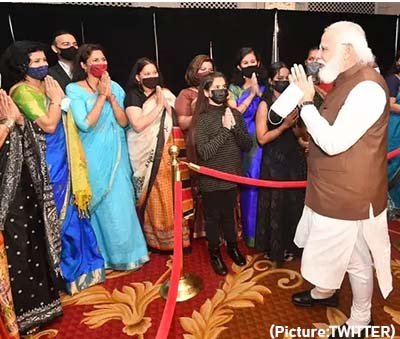 The diaspora factor was also very evident at PM Modi’s meeting with US Vice President Kamala Harris. He told Harris “between India and the US, we have very vibrant and strong people-to-people connections, you know that all too well,” referring to her Indian roots.
The diaspora factor was also very evident at PM Modi’s meeting with US Vice President Kamala Harris. He told Harris “between India and the US, we have very vibrant and strong people-to-people connections, you know that all too well,” referring to her Indian roots. 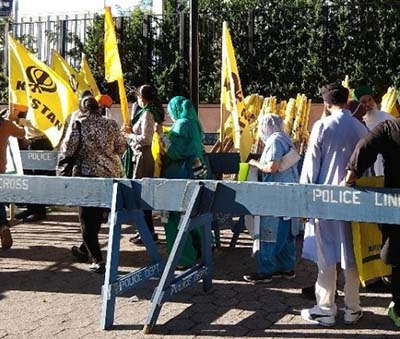 The rally was sponsored by 21 organizations under the banner of Coalition to Stop Genocide in India, including Ambedkar International Center, Ambedkar King Study Circle, Black Lives Matter, Coalition Against Fascism in India, Dalit Solidarity Forum, New York City Democratic Socialists’ Racial Justice Working Group, Federation of Indian American Christian Organizations of North America, Hindus for Human Rights, Indian American Muslim Council, India Civil Watch International, International Commission for Dalit Rights, Jewish Voice for Peace, MICAH Faith Institute, Muslim Community Network, National Coalition against Caste Discrimination in the USA, NY Sikh Council, New York State Council of Churches, SALAM, Students Against Hindutva Ideology, and Voices Against Fascism in India.
The rally was sponsored by 21 organizations under the banner of Coalition to Stop Genocide in India, including Ambedkar International Center, Ambedkar King Study Circle, Black Lives Matter, Coalition Against Fascism in India, Dalit Solidarity Forum, New York City Democratic Socialists’ Racial Justice Working Group, Federation of Indian American Christian Organizations of North America, Hindus for Human Rights, Indian American Muslim Council, India Civil Watch International, International Commission for Dalit Rights, Jewish Voice for Peace, MICAH Faith Institute, Muslim Community Network, National Coalition against Caste Discrimination in the USA, NY Sikh Council, New York State Council of Churches, SALAM, Students Against Hindutva Ideology, and Voices Against Fascism in India. Men, women, children and youth dressed in traditional attire, from across the state of Connecticut came together to celebrate their culture, traditions, and fellowship during the annual Onam celebrations organized by Malayalee Association of Southern Connecticut (MASCONN) at Madison Middle School, Trumbull, CT on Saturday, September 18th, 2021.
Men, women, children and youth dressed in traditional attire, from across the state of Connecticut came together to celebrate their culture, traditions, and fellowship during the annual Onam celebrations organized by Malayalee Association of Southern Connecticut (MASCONN) at Madison Middle School, Trumbull, CT on Saturday, September 18th, 2021.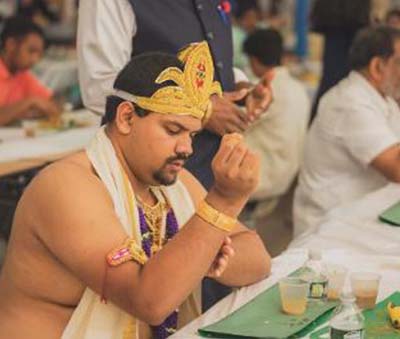 “MASCONN an offshoot of the natural growth of the Indian-American especially Malayalee Community in the southern Connecticut region,” said Sujanan Nair, President of MASCON, in his welcome address.
“MASCONN an offshoot of the natural growth of the Indian-American especially Malayalee Community in the southern Connecticut region,” said Sujanan Nair, President of MASCON, in his welcome address. Participants were dressed in their traditional attire. The most traditional costume for the men of Kerala is the “Mundu” which is mostly white in colour. It is worn tightly at the waist with a knot and comes down till the feet. Women following Hinduism wear a blouse and mundu known as “Mundu neriyathu.” Children were seen elegantly in mundus, shirts, sarees and salwar.
Participants were dressed in their traditional attire. The most traditional costume for the men of Kerala is the “Mundu” which is mostly white in colour. It is worn tightly at the waist with a knot and comes down till the feet. Women following Hinduism wear a blouse and mundu known as “Mundu neriyathu.” Children were seen elegantly in mundus, shirts, sarees and salwar. The celebration of Onam festival provides them with a perfect opportunity to encourage the new generation of children of Indian origin to witness, learn and appreciate these rich traditions, even while it offers the first generation NRIs to stay connected and cherish the rich cultural heritage they hold so dear to them Malayalee Association of Southern Connecticut (MASCONN) which was formed less than ten years ago, the cultural extravaganza was in many ways “reliving the culture and traditions” and “cherishing the past with a view to pass it on to the future generation.”
The celebration of Onam festival provides them with a perfect opportunity to encourage the new generation of children of Indian origin to witness, learn and appreciate these rich traditions, even while it offers the first generation NRIs to stay connected and cherish the rich cultural heritage they hold so dear to them Malayalee Association of Southern Connecticut (MASCONN) which was formed less than ten years ago, the cultural extravaganza was in many ways “reliving the culture and traditions” and “cherishing the past with a view to pass it on to the future generation.”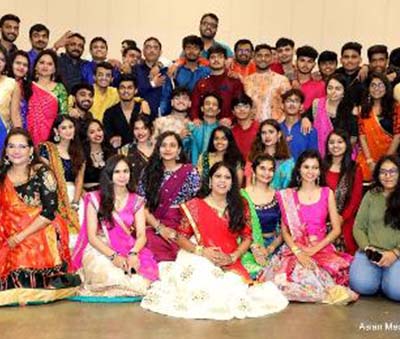 “The best karma is not the one that has a good result, the best karma is the one that has the best purpose.” Shri Jalaram Mandir follows the similar path of public service, with all its revenue from such programs going to the contribution of the temple. The selfless and free service of Shri Jalaram Mandir, its managing committee and all the volunteers was as excellent as ever with beautiful sound system lighting, security, photography, videography and booths for different businesses. There was free entry for children below 10 years of age, free parking, tea and snacks at reasonable prices, provision of water, cold drinks and free covid testing. The contribution of donors from different fields as sponsors was commendable. All the devotees who came were also very supportive and co-operative.
“The best karma is not the one that has a good result, the best karma is the one that has the best purpose.” Shri Jalaram Mandir follows the similar path of public service, with all its revenue from such programs going to the contribution of the temple. The selfless and free service of Shri Jalaram Mandir, its managing committee and all the volunteers was as excellent as ever with beautiful sound system lighting, security, photography, videography and booths for different businesses. There was free entry for children below 10 years of age, free parking, tea and snacks at reasonable prices, provision of water, cold drinks and free covid testing. The contribution of donors from different fields as sponsors was commendable. All the devotees who came were also very supportive and co-operative.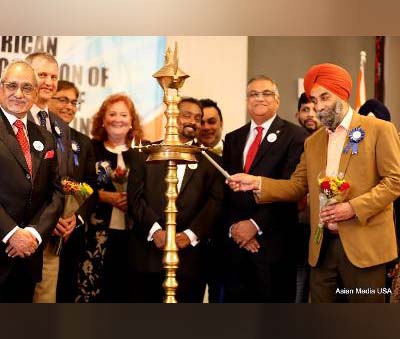 The event started with national Anthems and lamp lighting followed by the inaugural dance performance by the students of SR Dance Academy. The master of ceremony Madhura Sane kickstarted the event by welcoming all the board of directors and the distinguished guest on to the stage. The President Gladson Varghese delivered his speech to elaborate on the vision behind the initiative of launching AAEIO. He talked about how the organization aims at supporting engineers across the globe by providing them a voice and guidance by the experienced leadership of the organization. Vice President Nitin Maheshweri presented the Vision and 4 pillars of the organization. Chief Guest Consul General of India Mr. Amit Kumar along with Congressman Sean Casten officially Inaugurated the AAEIO by lighting the Lamp. AAEIO also presented the awards to Dr. Deepak Kant Vyas, Mr. Gulzar Singh and Mr. Brij Sharma for their contributionsto the community and becoming successful Engineering Entrepreneurs.
The event started with national Anthems and lamp lighting followed by the inaugural dance performance by the students of SR Dance Academy. The master of ceremony Madhura Sane kickstarted the event by welcoming all the board of directors and the distinguished guest on to the stage. The President Gladson Varghese delivered his speech to elaborate on the vision behind the initiative of launching AAEIO. He talked about how the organization aims at supporting engineers across the globe by providing them a voice and guidance by the experienced leadership of the organization. Vice President Nitin Maheshweri presented the Vision and 4 pillars of the organization. Chief Guest Consul General of India Mr. Amit Kumar along with Congressman Sean Casten officially Inaugurated the AAEIO by lighting the Lamp. AAEIO also presented the awards to Dr. Deepak Kant Vyas, Mr. Gulzar Singh and Mr. Brij Sharma for their contributionsto the community and becoming successful Engineering Entrepreneurs.  Dr. Mohanbir Sawhney, Associate Dean, (Northwestern University, Kellogg) delivered an inspirational and informative keynote speech elaborating on his experience and the roles and future of organizations like AAEIO. The speech by the Vice President 2021 Nitin Maheshwari included the plans for the upcoming initiatives taken by AAEIO and how the organization aims at supporting small businesses, fresh graduates as well as the fellow engineers from all across the globe. The president elect 2021 Ajit Pant talked about how AAEIO will act as an umbrella organization for the engineers from all streams of engineering like civil, mechanical, IT, electronics, Electrical and so on. Nag Jaiswal did the Vote of Thanks and he thanked all the sponsors, Dignitaries, AAEO Board and all the Guests for their help and support.
Dr. Mohanbir Sawhney, Associate Dean, (Northwestern University, Kellogg) delivered an inspirational and informative keynote speech elaborating on his experience and the roles and future of organizations like AAEIO. The speech by the Vice President 2021 Nitin Maheshwari included the plans for the upcoming initiatives taken by AAEIO and how the organization aims at supporting small businesses, fresh graduates as well as the fellow engineers from all across the globe. The president elect 2021 Ajit Pant talked about how AAEIO will act as an umbrella organization for the engineers from all streams of engineering like civil, mechanical, IT, electronics, Electrical and so on. Nag Jaiswal did the Vote of Thanks and he thanked all the sponsors, Dignitaries, AAEO Board and all the Guests for their help and support. 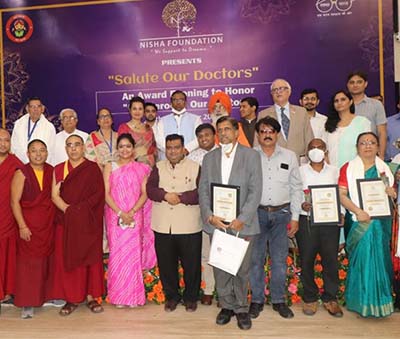 The Governor of Sikkim, Ganga Prasad, praised the foundation initiative and congratulated all the awardees. He launched the stickers, “I Salute Doctors”, in the presence of all the dignitaries. He said Nisha foundation is working towards a wonderful mission for betterment of society. Kulstey said Nisha foundation initiative is great and he applaud this program and appreciated Nisha foundation for working in 173 countries in association of world Organization of peace for child education, sports and salutation evening in name of frontliners During his speech he said it’s important to do this kind of programs to uplift human consciousness and he expressed his concern for farmers.
The Governor of Sikkim, Ganga Prasad, praised the foundation initiative and congratulated all the awardees. He launched the stickers, “I Salute Doctors”, in the presence of all the dignitaries. He said Nisha foundation is working towards a wonderful mission for betterment of society. Kulstey said Nisha foundation initiative is great and he applaud this program and appreciated Nisha foundation for working in 173 countries in association of world Organization of peace for child education, sports and salutation evening in name of frontliners During his speech he said it’s important to do this kind of programs to uplift human consciousness and he expressed his concern for farmers.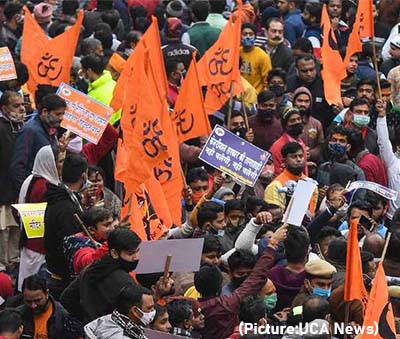 Located in western Madhya Pradesh, bordering Baroda, this district had witnessed similar unrest when Azad Prem Singh, a local leader of Vishwa Hindu Parishad (VHP) or World Hindu Council, had demanded the closure of all churches in the area earlier this year. Although Singh focused on Jhabua and surrounding tribal-dominated districts, the continued escalation of communal threats could have repercussions across the country, particularly in states like Madhya Pradesh which have enacted the anti-conversions laws.
Located in western Madhya Pradesh, bordering Baroda, this district had witnessed similar unrest when Azad Prem Singh, a local leader of Vishwa Hindu Parishad (VHP) or World Hindu Council, had demanded the closure of all churches in the area earlier this year. Although Singh focused on Jhabua and surrounding tribal-dominated districts, the continued escalation of communal threats could have repercussions across the country, particularly in states like Madhya Pradesh which have enacted the anti-conversions laws.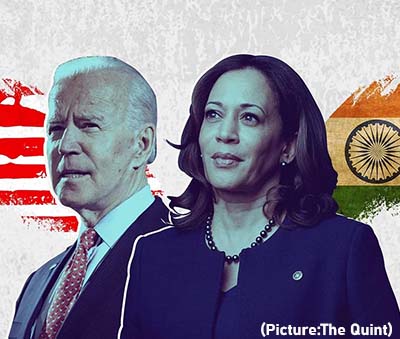 FIACONA has urged the President Biden and Vice President Harris “to be more direct and explicit in expressing that India should not and could not afford to go down the path of religious nationalism at the expense of pluralist democratic principles that values Christian and other religious segments of the population. Should Modi and his party choose to continue down this path of religious nationalism despite warnings from leaders of the free world, there is no reason to assume that India would end up any better than Pakistan, Sri Lanka, or Myanmar in that region, thus jeopardizing the stability and commerce in the Indo-Pacific region.”
FIACONA has urged the President Biden and Vice President Harris “to be more direct and explicit in expressing that India should not and could not afford to go down the path of religious nationalism at the expense of pluralist democratic principles that values Christian and other religious segments of the population. Should Modi and his party choose to continue down this path of religious nationalism despite warnings from leaders of the free world, there is no reason to assume that India would end up any better than Pakistan, Sri Lanka, or Myanmar in that region, thus jeopardizing the stability and commerce in the Indo-Pacific region.”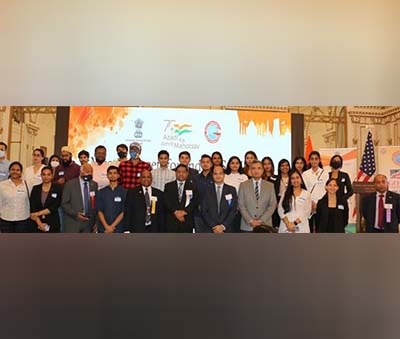 The Indian Ambassador addressed the students via a video message. He told them: “Delighted to welcome the students virtually! The education and knowledge partnership are an area that holds great potential in our bilateral relations. During my visits across US, I’ve always made it a point to visit universities and visit faculty and students there.” He further added “We have an active student hub and a dedicated student wing at the Embassy. You can count on them for any assistance.” The chief guest/host for the evening Ambassador Randhir Kumar Jaiswal, commented, “Welcome to all the students from India with open heart as you pursue your future studies here in the North-East region and help in the growth of economy here in USA and back home in India.”
The Indian Ambassador addressed the students via a video message. He told them: “Delighted to welcome the students virtually! The education and knowledge partnership are an area that holds great potential in our bilateral relations. During my visits across US, I’ve always made it a point to visit universities and visit faculty and students there.” He further added “We have an active student hub and a dedicated student wing at the Embassy. You can count on them for any assistance.” The chief guest/host for the evening Ambassador Randhir Kumar Jaiswal, commented, “Welcome to all the students from India with open heart as you pursue your future studies here in the North-East region and help in the growth of economy here in USA and back home in India.”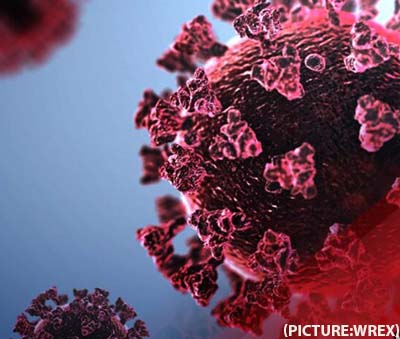 Across the world, the 1918-19 influenza pandemic killed 50 million victims globally at a time when the world had one-quarter the population it does now. Global deaths from COVID-19 now stand at more than 4.6 million. For now, the pandemic still has the United States and other parts of the world firmly in its jaws. While the delta-fueled surge in infections may have peaked, U.S. deaths are running at over 1,900 a day on average, the highest level since early March, and the country’s overall toll topped 675,000 on Monday, September 20th, according to the count kept by Johns Hopkins University, though the real number is believed to be higher.
Across the world, the 1918-19 influenza pandemic killed 50 million victims globally at a time when the world had one-quarter the population it does now. Global deaths from COVID-19 now stand at more than 4.6 million. For now, the pandemic still has the United States and other parts of the world firmly in its jaws. While the delta-fueled surge in infections may have peaked, U.S. deaths are running at over 1,900 a day on average, the highest level since early March, and the country’s overall toll topped 675,000 on Monday, September 20th, according to the count kept by Johns Hopkins University, though the real number is believed to be higher. The ebbing of COVID-19 could happen if the virus progressively weakens as it mutates and more and more humans’ immune systems learn to attack it. Vaccination and surviving infection are the main ways the immune system improves. Breast-fed infants also gain some immunity from their mothers. Under that optimistic scenario, schoolchildren would get mild illness that trains their immune systems. As they grow up, the children would carry the immune response memory, so that when they are old and vulnerable, the coronavirus would be no more dangerous than cold viruses.
The ebbing of COVID-19 could happen if the virus progressively weakens as it mutates and more and more humans’ immune systems learn to attack it. Vaccination and surviving infection are the main ways the immune system improves. Breast-fed infants also gain some immunity from their mothers. Under that optimistic scenario, schoolchildren would get mild illness that trains their immune systems. As they grow up, the children would carry the immune response memory, so that when they are old and vulnerable, the coronavirus would be no more dangerous than cold viruses.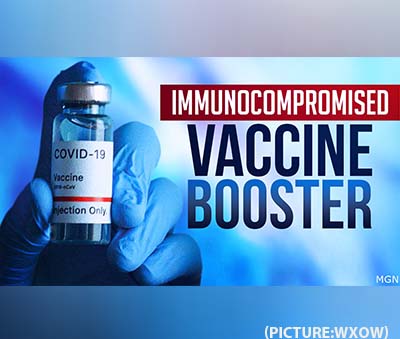 Although the result wasn’t what Pfizer-BioNTech expected, Kathrin Jansen, senior vice president and head of vaccine research and development at Pfizer, said in a statement that “these data, and the larger body of scientific evidence presented at the meeting, underscore our belief that boosters will be a critical tool in the ongoing effort to control the spread of this virus. We thank the committee for their thoughtful review of the data and will work with the FDA following today’s meeting to address the committee’s questions, as we continue to believe in the benefits of a booster dose for a broader population.”
Although the result wasn’t what Pfizer-BioNTech expected, Kathrin Jansen, senior vice president and head of vaccine research and development at Pfizer, said in a statement that “these data, and the larger body of scientific evidence presented at the meeting, underscore our belief that boosters will be a critical tool in the ongoing effort to control the spread of this virus. We thank the committee for their thoughtful review of the data and will work with the FDA following today’s meeting to address the committee’s questions, as we continue to believe in the benefits of a booster dose for a broader population.”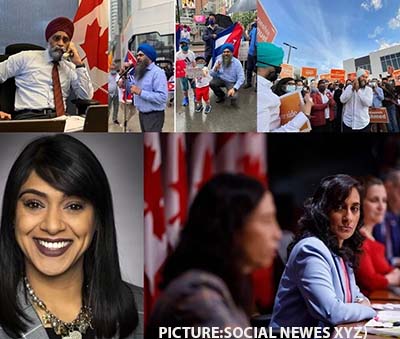 The main opposition Conservative Party ended up with a tally of 122 seats one up from the dissolved House. This is Trudeau’s third federal election win, but his critics say the poll was a waste of time. As many as 17 Indo-Canadians were elected to the Canadian Parliament during the elections held on Monday, September 20th. The Jagmeet Singh-led New Democratic Party (NDP) will again hold the balance of power as it increased its tally from 24 to 27. NDP leader Jagmeet Singh also retained his Burnaby South seat in British Columbia. Among the 17 Indo-Canadian winners are Jagmeet Singh, former Minister Tim Uppal and three current Cabinet Ministers Harjit Singh Sajjan, Bardish Chagger and Anita Anand. Defense Minister Harjit Singh Sajjan again won from Vancouver South by beating Sukhbir Gill of the Conservative Party.
The main opposition Conservative Party ended up with a tally of 122 seats one up from the dissolved House. This is Trudeau’s third federal election win, but his critics say the poll was a waste of time. As many as 17 Indo-Canadians were elected to the Canadian Parliament during the elections held on Monday, September 20th. The Jagmeet Singh-led New Democratic Party (NDP) will again hold the balance of power as it increased its tally from 24 to 27. NDP leader Jagmeet Singh also retained his Burnaby South seat in British Columbia. Among the 17 Indo-Canadian winners are Jagmeet Singh, former Minister Tim Uppal and three current Cabinet Ministers Harjit Singh Sajjan, Bardish Chagger and Anita Anand. Defense Minister Harjit Singh Sajjan again won from Vancouver South by beating Sukhbir Gill of the Conservative Party. Alarmingly, the number of hate crimes against Hindu Americans has jumped by more than 500 percent, from just two in 2019, to 11 in 2020. Six offenders participated in 11 attacks against Hindu Americans. The FBI logged 15 hate-motivated attacks against Buddhists in 2020. Surprisingly, the number of hate crimes against Muslim Americans dropped by half: 121 offenders participated in 104 attacks against Muslims, rendering 124 victims.
Alarmingly, the number of hate crimes against Hindu Americans has jumped by more than 500 percent, from just two in 2019, to 11 in 2020. Six offenders participated in 11 attacks against Hindu Americans. The FBI logged 15 hate-motivated attacks against Buddhists in 2020. Surprisingly, the number of hate crimes against Muslim Americans dropped by half: 121 offenders participated in 104 attacks against Muslims, rendering 124 victims. Haribhai Patel, President of the BSCC, along with all the committee members have proved once more that his efforts in ensuring his senior members receive the best service is unmatched. In the past, The BSCC has held vaccination fairs to make sure all members can get vaccinated without going through online appointments and unnecessary hurdles.
Haribhai Patel, President of the BSCC, along with all the committee members have proved once more that his efforts in ensuring his senior members receive the best service is unmatched. In the past, The BSCC has held vaccination fairs to make sure all members can get vaccinated without going through online appointments and unnecessary hurdles.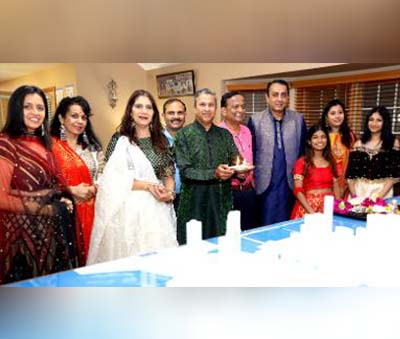 First, Mr. Joshi looked through Google Earth block by block. Then, he downloaded each block and with various software’s, reconstructed each block for it to be printed. On average, each block required 20+ hours of work. This model featured the Willis Tower, the tallest building in Chicago downtown, requiring 27+ hours of 3D printing. In addition, the model included other Chicago land favorites like the John Hancock building, Solder Field, and the Chicago River. This relentless work day and night through these past 9 months left all Chicagoans speechless. We all can’t wait to see the project he creates next!
First, Mr. Joshi looked through Google Earth block by block. Then, he downloaded each block and with various software’s, reconstructed each block for it to be printed. On average, each block required 20+ hours of work. This model featured the Willis Tower, the tallest building in Chicago downtown, requiring 27+ hours of 3D printing. In addition, the model included other Chicago land favorites like the John Hancock building, Solder Field, and the Chicago River. This relentless work day and night through these past 9 months left all Chicagoans speechless. We all can’t wait to see the project he creates next!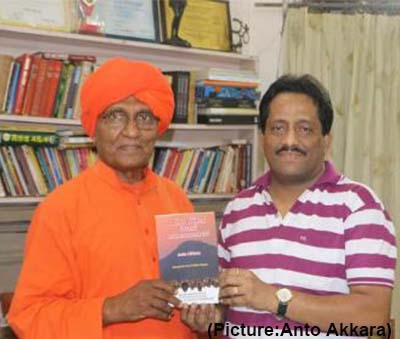 A peep into his life will amaze anyone. Vepa Shyam Rao was born on Sept. 21, 1939, in an orthodox Brahmin family in the Srikakulam district of Andhra Pradesh. By the age of five, he had lost both parents and grew up under the care of his maternal grandfather.
A peep into his life will amaze anyone. Vepa Shyam Rao was born on Sept. 21, 1939, in an orthodox Brahmin family in the Srikakulam district of Andhra Pradesh. By the age of five, he had lost both parents and grew up under the care of his maternal grandfather. Hurricane Ida roared ashore in Louisiana on Sunday at Category 4 strength, with maximum sustained winds of 150 mph. In fact, as the eyewall of Ida hammered the Louisiana coast, a ship about 50 miles south-southwest of New Orleans clocked a peak wind gust of 172 mph, which is just shy of the strongest measured wind from a hurricane in the US. Ida was downgraded to a tropical storm moved farther inland over southeastern Louisiana and into southwestern Mississippi, the National Hurricane Center said.
Hurricane Ida roared ashore in Louisiana on Sunday at Category 4 strength, with maximum sustained winds of 150 mph. In fact, as the eyewall of Ida hammered the Louisiana coast, a ship about 50 miles south-southwest of New Orleans clocked a peak wind gust of 172 mph, which is just shy of the strongest measured wind from a hurricane in the US. Ida was downgraded to a tropical storm moved farther inland over southeastern Louisiana and into southwestern Mississippi, the National Hurricane Center said.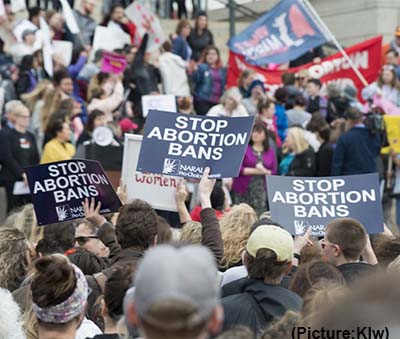 However, even if the ban is ultimately blocked, it will have a lasting impact on Texas and provide a roadmap for other conservative states to enact similar abortion restrictions. Senate Bill 8, signed by Republican Gov. Greg Abbott in May, bars abortions once a doctor can detect fetal cardiac activity, which is often before many people know they are pregnant. The ban would prevent at least 85% of abortions sought in Texas, according to abortion rights advocates and providers. It is now the most restrictive abortion law in the nation; at least 12 other states have passed six-week abortion bans, but all have been blocked from going into effect. “Texas politicians will have effectively overturned Roe v. Wade,” Nancy Northup, president and CEO of the Center for Reproductive Rights, said shortly before the law went into effect, referring to the landmark 1973 decision that established the constitutionally protected right to abortion before a fetus is viable.
However, even if the ban is ultimately blocked, it will have a lasting impact on Texas and provide a roadmap for other conservative states to enact similar abortion restrictions. Senate Bill 8, signed by Republican Gov. Greg Abbott in May, bars abortions once a doctor can detect fetal cardiac activity, which is often before many people know they are pregnant. The ban would prevent at least 85% of abortions sought in Texas, according to abortion rights advocates and providers. It is now the most restrictive abortion law in the nation; at least 12 other states have passed six-week abortion bans, but all have been blocked from going into effect. “Texas politicians will have effectively overturned Roe v. Wade,” Nancy Northup, president and CEO of the Center for Reproductive Rights, said shortly before the law went into effect, referring to the landmark 1973 decision that established the constitutionally protected right to abortion before a fetus is viable. Affiliated with various US medical organizations and institutions, the soft-spoken Dr. Murthy is a Resuscitation Educator and Researcher, Advisor to Resuscitation Training Centers, Champion of Community Cardiopulmonary Resuscitation (CPR), and a Leader of US Organized Medicine. His Mission has been “Saving Lives” in Sudden Cardiac Arrests and common heart issues.
Affiliated with various US medical organizations and institutions, the soft-spoken Dr. Murthy is a Resuscitation Educator and Researcher, Advisor to Resuscitation Training Centers, Champion of Community Cardiopulmonary Resuscitation (CPR), and a Leader of US Organized Medicine. His Mission has been “Saving Lives” in Sudden Cardiac Arrests and common heart issues. The Founder of Chicago Medical Society’s Community CPR Project Saving More Illinois Lives through Education (SMILE,) Dr. Murthy, takes upon himself the life-long mission of saving lives through effective preventive measures. He says, “Almost one in three among South Asians may die from heart disease before 65 years of age.”
The Founder of Chicago Medical Society’s Community CPR Project Saving More Illinois Lives through Education (SMILE,) Dr. Murthy, takes upon himself the life-long mission of saving lives through effective preventive measures. He says, “Almost one in three among South Asians may die from heart disease before 65 years of age.” Dr. Murthy served the American Heart Association in different capacities. Such as National and International Faculty, Member of the International Committee, and Advisor to AHA International Training Centers, Also as AHA Liaison to Medical Organizations in the USA too. He co-chaired programs at the AHA Scientific Sessions and delivered Resuscitation-based lectures at prestigious US medical institutions.
Dr. Murthy served the American Heart Association in different capacities. Such as National and International Faculty, Member of the International Committee, and Advisor to AHA International Training Centers, Also as AHA Liaison to Medical Organizations in the USA too. He co-chaired programs at the AHA Scientific Sessions and delivered Resuscitation-based lectures at prestigious US medical institutions. Stanley won his 18th District Assembly seat in a Special Election in January 2021, becoming the first South Asian to represent Middlesex County in the New Jersey Legislature. Stanley defeated fellow Democrat, Edison Councilman Joe Coyle by a vote of 189-136, a 58%-42% margin, according to the Middlesex County Democratic Organization. The seat became vacant when former Assemblywoman Nancy Pinkin resigned after being sworn in as the new Middlesex County Clerk.Endorsed by the Middlesex County Democratic Organization, Assemblyman Stanley was sworn in on January 27th, 2021. Stanley serves as a member of the
Stanley won his 18th District Assembly seat in a Special Election in January 2021, becoming the first South Asian to represent Middlesex County in the New Jersey Legislature. Stanley defeated fellow Democrat, Edison Councilman Joe Coyle by a vote of 189-136, a 58%-42% margin, according to the Middlesex County Democratic Organization. The seat became vacant when former Assemblywoman Nancy Pinkin resigned after being sworn in as the new Middlesex County Clerk.Endorsed by the Middlesex County Democratic Organization, Assemblyman Stanley was sworn in on January 27th, 2021. Stanley serves as a member of the  Stanley was born in the State of Karnataka, India and immigrated to Brooklyn, NY at a young age. For the last 21 years, he has called East Brunswick his home. While living there, he has worked in the finance industry as a title and life insurance agent, as well as a mortgage broker. Stanley is a proud father of three children and has been actively involved in the Middlesex County community, previously serving as a Trustee of the Lighthouse Christian Fellowship Church in East Brunswick and as President of the Fox Meadow Condominium Association. State Sen. Patrick Diegnan (D-South Plainfield) was among those who had supported the then East Brunswick Councilman Sterley Stanley for the Assembly Seat. “I’m supporting Sterley Stanley,” he said. “He’s a good guy and he works with me all the time.” At a February 8th meeting, the East Brunswick town council honored Stanley’s four years of local service. At the meeting, Stanley stated that one of his proudest achievements as Council President was helping to ensure that the governing body functioned as a cohesive unit. “We might have had differences of opinion and we have differences in the way we solve things, but at the end of the day, we all got together and did what was best for the Township,” Stanley said. “I feel honored now to not just represent East Brunswick, but the whole 18th District, and all seven towns that are there,” he said.
Stanley was born in the State of Karnataka, India and immigrated to Brooklyn, NY at a young age. For the last 21 years, he has called East Brunswick his home. While living there, he has worked in the finance industry as a title and life insurance agent, as well as a mortgage broker. Stanley is a proud father of three children and has been actively involved in the Middlesex County community, previously serving as a Trustee of the Lighthouse Christian Fellowship Church in East Brunswick and as President of the Fox Meadow Condominium Association. State Sen. Patrick Diegnan (D-South Plainfield) was among those who had supported the then East Brunswick Councilman Sterley Stanley for the Assembly Seat. “I’m supporting Sterley Stanley,” he said. “He’s a good guy and he works with me all the time.” At a February 8th meeting, the East Brunswick town council honored Stanley’s four years of local service. At the meeting, Stanley stated that one of his proudest achievements as Council President was helping to ensure that the governing body functioned as a cohesive unit. “We might have had differences of opinion and we have differences in the way we solve things, but at the end of the day, we all got together and did what was best for the Township,” Stanley said. “I feel honored now to not just represent East Brunswick, but the whole 18th District, and all seven towns that are there,” he said. How we did this In 2019, roughly half of Hindu voters (49%) supported the BJP, giving the party a majority in the Lok Sabha – India’s lower house of parliament – and allowing Prime Minister Narendra Modi a
How we did this In 2019, roughly half of Hindu voters (49%) supported the BJP, giving the party a majority in the Lok Sabha – India’s lower house of parliament – and allowing Prime Minister Narendra Modi a 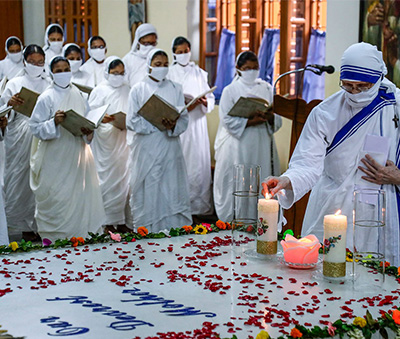 Mother Teresa also known as Saint Teresa of Calcutta, but her original name was Anjeze Gonxhe Bojaxhiu. The word “Anjeze” means “a little flower” in Albanian. In 1928, when Mother Teresa was just 18 years old, she left her family to devote her life into social service. She had joined the Sisters of Loreto at Loreto Abbey in Rathfarnhan, Ireland to learn English with the view of becoming a missionary. She never saw her mother or sister after leaving home. Mother Teresa arrived in India in 1929, when she was mere 19. She spent most of her life in India. Mother Teresa was baptized in Skopje a day after her birth. She later started to consider the day of her baptised, August 27, as her “true birthday”.
Mother Teresa also known as Saint Teresa of Calcutta, but her original name was Anjeze Gonxhe Bojaxhiu. The word “Anjeze” means “a little flower” in Albanian. In 1928, when Mother Teresa was just 18 years old, she left her family to devote her life into social service. She had joined the Sisters of Loreto at Loreto Abbey in Rathfarnhan, Ireland to learn English with the view of becoming a missionary. She never saw her mother or sister after leaving home. Mother Teresa arrived in India in 1929, when she was mere 19. She spent most of her life in India. Mother Teresa was baptized in Skopje a day after her birth. She later started to consider the day of her baptised, August 27, as her “true birthday”.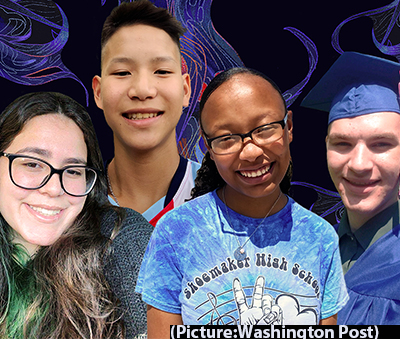 These young Americans, who are coming of age amid a once-in-a-lifetime pandemic, political and social unrest, growing economic inequality and rising crime, are keenly aware of the country’s problems. Majorities view political divisions, racial discrimination, the cost of health care and gun violence as “major threats” to their generation, according to the new Post-Ipsos poll. Nearly half also rank
These young Americans, who are coming of age amid a once-in-a-lifetime pandemic, political and social unrest, growing economic inequality and rising crime, are keenly aware of the country’s problems. Majorities view political divisions, racial discrimination, the cost of health care and gun violence as “major threats” to their generation, according to the new Post-Ipsos poll. Nearly half also rank  The Society also informed the consul general of the Khadi Fashion show and Patriotic Music Competition held on India’s Independence Day in Central Jersey. The Gandhian Society along with the Birla Group representatives also explained to the Consul General the intended purpose and logistics of the proposed museum for Mahatma Gandhi. The consul general appreciated the proposed project and promised to extend his support for the project.
The Society also informed the consul general of the Khadi Fashion show and Patriotic Music Competition held on India’s Independence Day in Central Jersey. The Gandhian Society along with the Birla Group representatives also explained to the Consul General the intended purpose and logistics of the proposed museum for Mahatma Gandhi. The consul general appreciated the proposed project and promised to extend his support for the project. This is the first such attempt in the state where expatriates, and returnees, of a village have come together and mobilized capital for a business enterprise of this kind. The total investment of Rs 18 crore was raised from 207 people. Of these, 147 invested only Rs 1 lakh each. The price of a share was fixed at Rs 50,000, and an individual had to invest in at least two shares. There was a cap on the maximum investment as well – Rs 40 lakh per person. “The major highlight of the venture is that a large section of investors are ordinary people who have some small savings, a few lakh rupees, after years of toil in the Gulf. But for an initiative of this type, they would not have been able to be a part of a professional business venture,” said GTF Steels Chairman Mohammed Basheer Nadammal.
This is the first such attempt in the state where expatriates, and returnees, of a village have come together and mobilized capital for a business enterprise of this kind. The total investment of Rs 18 crore was raised from 207 people. Of these, 147 invested only Rs 1 lakh each. The price of a share was fixed at Rs 50,000, and an individual had to invest in at least two shares. There was a cap on the maximum investment as well – Rs 40 lakh per person. “The major highlight of the venture is that a large section of investors are ordinary people who have some small savings, a few lakh rupees, after years of toil in the Gulf. But for an initiative of this type, they would not have been able to be a part of a professional business venture,” said GTF Steels Chairman Mohammed Basheer Nadammal. From the baptism of Peter Pope (in the year Shakespeare died) to the death of Catherine of Bengal; the chronicles of Joseph Emin, Abu Taleb and Mirza Ihtishamuddin to Sake Dean Mahomet’s Hindoostane Coffee House; Gandhi’s experiments in Holborn to the recovery of the lost manuscript of Tagore’s Gitanjali in Baker Street; Jinnah’s trysts with Shakespeare to Nehru’s duels with destiny; Princess Sophia’s defiance of the royalty to Anand establishing the Progressive Writers’ Association in Soho; Aurobindo Ghose’s Victorian idylls to Subhas Chandra Bose’s interwar days; the four Indian politicians who sat at Westminster to the blood pacts for Pakistan; India in the shockwaves at Whitehall to India in the radiowaves at the BBC; the intrigues of India House and India League to hundreds of East Bengali restaurateurs seasoning curries and kebabs around Brick Lane�the book details all this and more. “Indians in London” is a scintillating adventure across the Thames, the Embankment, the Southwarks, Bloomsburys, Kensingtons, Piccadillys, Wembleys and Brick Lanes that saw a nation-a cultural, historical and literary revolution that redefined London over half a millennium of Indian migrations-reborn as independent India.
From the baptism of Peter Pope (in the year Shakespeare died) to the death of Catherine of Bengal; the chronicles of Joseph Emin, Abu Taleb and Mirza Ihtishamuddin to Sake Dean Mahomet’s Hindoostane Coffee House; Gandhi’s experiments in Holborn to the recovery of the lost manuscript of Tagore’s Gitanjali in Baker Street; Jinnah’s trysts with Shakespeare to Nehru’s duels with destiny; Princess Sophia’s defiance of the royalty to Anand establishing the Progressive Writers’ Association in Soho; Aurobindo Ghose’s Victorian idylls to Subhas Chandra Bose’s interwar days; the four Indian politicians who sat at Westminster to the blood pacts for Pakistan; India in the shockwaves at Whitehall to India in the radiowaves at the BBC; the intrigues of India House and India League to hundreds of East Bengali restaurateurs seasoning curries and kebabs around Brick Lane�the book details all this and more. “Indians in London” is a scintillating adventure across the Thames, the Embankment, the Southwarks, Bloomsburys, Kensingtons, Piccadillys, Wembleys and Brick Lanes that saw a nation-a cultural, historical and literary revolution that redefined London over half a millennium of Indian migrations-reborn as independent India.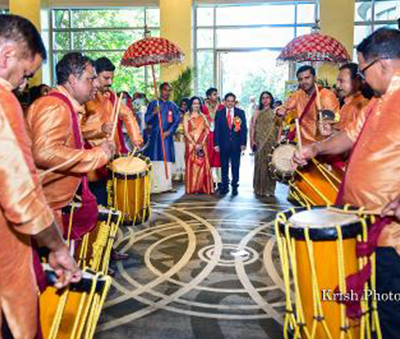 In his presidential address, while expressing gratitude to the members of AKMG “for giving me the opportunity this year to be the President of our wondrous organization”. Dr. Subrahmanya Bhat said, “I worked very hard to make sure that this year’s AKMG was the best it could be. Likewise, our executive team has worked very hard to make sure the convention would be successful and profitable. Despite the challenges posed by the pandemic.”
In his presidential address, while expressing gratitude to the members of AKMG “for giving me the opportunity this year to be the President of our wondrous organization”. Dr. Subrahmanya Bhat said, “I worked very hard to make sure that this year’s AKMG was the best it could be. Likewise, our executive team has worked very hard to make sure the convention would be successful and profitable. Despite the challenges posed by the pandemic.”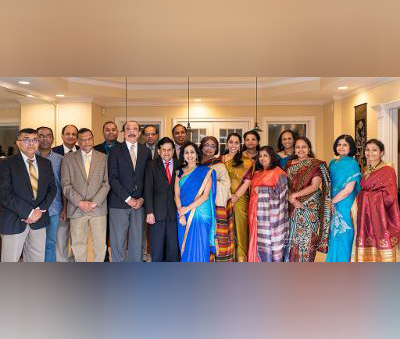 While inaugurating the convention with the traditional lighting of the lamp, in her keynote address, Dr. Swathi Kulkarni, Consul General of India in Atlanta, described the Indian American Physician community as a “Testament to the greatest growth story”. While emphasizing the role of physicians during the pandemic, Dr. Kulkarni praised their contributions and achievements. Dr. Kulkarni shared with the audience about the many programs and plans offered by the Government of India. Those are to alleviate the sufferings of the people of India during the pandemic. In addition, Dr. Kulkarni stressed the importance of the Indo-US Strategic Alliance, especially in the health sector. While pointing out India’s contributions to providing the world with quality drugs for lower prices.
While inaugurating the convention with the traditional lighting of the lamp, in her keynote address, Dr. Swathi Kulkarni, Consul General of India in Atlanta, described the Indian American Physician community as a “Testament to the greatest growth story”. While emphasizing the role of physicians during the pandemic, Dr. Kulkarni praised their contributions and achievements. Dr. Kulkarni shared with the audience about the many programs and plans offered by the Government of India. Those are to alleviate the sufferings of the people of India during the pandemic. In addition, Dr. Kulkarni stressed the importance of the Indo-US Strategic Alliance, especially in the health sector. While pointing out India’s contributions to providing the world with quality drugs for lower prices. Being away from home, the participants were led to celebrate
Being away from home, the participants were led to celebrate  Dr. Sunil Kumar, Chair, AKMG Humanitarian Services, thanked AKMG members as they “stepped up to the plate when our motherland was crying for help. I have always been proud of AKMG’s commitment to charity and even more today with your actions. As you know, when the COVID second wave started threatening India, we came together and helped our people prevent a catastrophe. As a result, we were able to reach an agreement with the international charity organization GLOBAL MEDIC to match our donations with $100,000 worth of PPE equipment.”
Dr. Sunil Kumar, Chair, AKMG Humanitarian Services, thanked AKMG members as they “stepped up to the plate when our motherland was crying for help. I have always been proud of AKMG’s commitment to charity and even more today with your actions. As you know, when the COVID second wave started threatening India, we came together and helped our people prevent a catastrophe. As a result, we were able to reach an agreement with the international charity organization GLOBAL MEDIC to match our donations with $100,000 worth of PPE equipment.” Tharoor, who attended the court proceedings virtually, thanked the court for discharging him of all offenses. “It had been seven and half years and it was a torture. I’m so grateful,” he said. Tharoor had been accused of subjecting his late wife to cruelty and abetting her suicide by Delhi Police, which had filed a detailed chargesheet in the matter. Pushkar’s body was discovered in a room of a five-star hotel in the capital on January 17, 2014. An FIR was registered by police a year later, on January 1, 2015, against unknown persons for murder. Tharoor was later booked under
Tharoor, who attended the court proceedings virtually, thanked the court for discharging him of all offenses. “It had been seven and half years and it was a torture. I’m so grateful,” he said. Tharoor had been accused of subjecting his late wife to cruelty and abetting her suicide by Delhi Police, which had filed a detailed chargesheet in the matter. Pushkar’s body was discovered in a room of a five-star hotel in the capital on January 17, 2014. An FIR was registered by police a year later, on January 1, 2015, against unknown persons for murder. Tharoor was later booked under 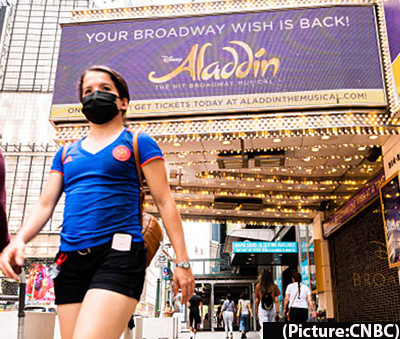 In New York City, the ‘Key to NYC Pass’ mandate began on Monday, which requires diners to show proof of at least one vaccination dose in order to dine indoors at restaurants, reports Xinhua news agency.
In New York City, the ‘Key to NYC Pass’ mandate began on Monday, which requires diners to show proof of at least one vaccination dose in order to dine indoors at restaurants, reports Xinhua news agency. In celebration of World Senior Citizen’s Day (August 21), Columbia Pacific Communities, India’s largest senior living community operator, launched India’s first ever report on the golden agers, The Positive Ageing Report. Supported by extensive desk research, the report, aims to examine traditional notions and understand evolving needs of seniors while giving key insights on the changing aspirations, needs of senior citizens and their view of ageing in the 21st century.
In celebration of World Senior Citizen’s Day (August 21), Columbia Pacific Communities, India’s largest senior living community operator, launched India’s first ever report on the golden agers, The Positive Ageing Report. Supported by extensive desk research, the report, aims to examine traditional notions and understand evolving needs of seniors while giving key insights on the changing aspirations, needs of senior citizens and their view of ageing in the 21st century.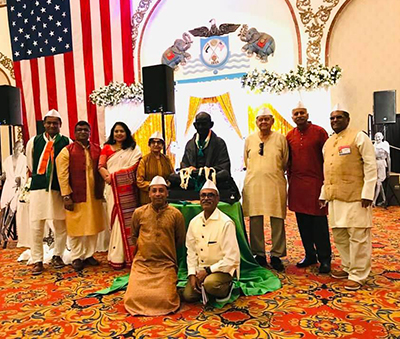 The event also raised funds for providing ambulances to help the secondary health sector in rural and tribal areas of India. Gandhian Society founder Bhadra Butala said that the society has committed to provide 50 ambulances this year, which will be run and maintained by Gandhian groups in the rural and tribal areas. The event on August 15th raised funds for 10 ambulances.
The event also raised funds for providing ambulances to help the secondary health sector in rural and tribal areas of India. Gandhian Society founder Bhadra Butala said that the society has committed to provide 50 ambulances this year, which will be run and maintained by Gandhian groups in the rural and tribal areas. The event on August 15th raised funds for 10 ambulances.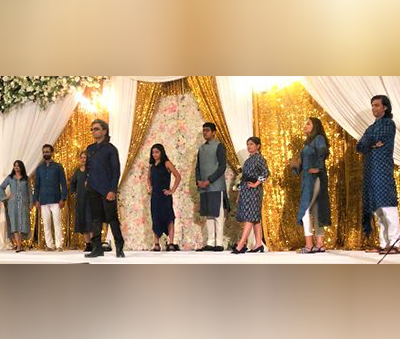 “When India was hit badly with the second wave of Covid, the Indian Diaspora came forward to help by sending oxygen concentrators and medical supplies and GOPIO chapters are supporting the noble cause of the Gandhian Society to provide ambulances to underserved rural and tribal areas,” Dr. Abraham added. Rep. Raj Mukerji said, “Mahatma Gandhi has been an inspiration to many leaders in the USA like Martin Luther King, President Obama and he himself is a big admirer of the Mahatma for the values that he propagated during his lifetime.”NJ Utilities Commissioner Chivukula said “the teachings of Mahatma are still relevant today and that the values system of the mahatma is identified with the Diaspora.” Chivukula hoped that the future generation will continue to uphold and keep these values of the greatest man from India.
“When India was hit badly with the second wave of Covid, the Indian Diaspora came forward to help by sending oxygen concentrators and medical supplies and GOPIO chapters are supporting the noble cause of the Gandhian Society to provide ambulances to underserved rural and tribal areas,” Dr. Abraham added. Rep. Raj Mukerji said, “Mahatma Gandhi has been an inspiration to many leaders in the USA like Martin Luther King, President Obama and he himself is a big admirer of the Mahatma for the values that he propagated during his lifetime.”NJ Utilities Commissioner Chivukula said “the teachings of Mahatma are still relevant today and that the values system of the mahatma is identified with the Diaspora.” Chivukula hoped that the future generation will continue to uphold and keep these values of the greatest man from India. The SACSS’ target diaspora is comprised of immigrants and their children hailing from the South Asian region which includes India, Pakistan, Bangladesh, Nepal, Sri Lanka, Afghanistan, Bhutan, and the Maldives. It also includes Indo-Caribbeans who are individuals from Caribbean nations tracing their heritage back to South Asia.
The SACSS’ target diaspora is comprised of immigrants and their children hailing from the South Asian region which includes India, Pakistan, Bangladesh, Nepal, Sri Lanka, Afghanistan, Bhutan, and the Maldives. It also includes Indo-Caribbeans who are individuals from Caribbean nations tracing their heritage back to South Asia. United States’ ranking Congressman Danny Davis participated in India’s Iconic Chicago Parade. Addressing the Community from the Grandstand, Congressman Danny Davis said: “I wish India and Indian Community a very happy India Independence Day and congratulate the organizers for this exceptionally beautiful parade.”
United States’ ranking Congressman Danny Davis participated in India’s Iconic Chicago Parade. Addressing the Community from the Grandstand, Congressman Danny Davis said: “I wish India and Indian Community a very happy India Independence Day and congratulate the organizers for this exceptionally beautiful parade.” The Independence Day “Azadi Ka Amrit Mahotsav” Banquet hosted on an impressive scale filled the Grand Ballroom to its full capacity with the patriotic spirit in full enthusiastic display at the celebrations symbolizing the spirit of India lifted by awe-inspiring remarks from prominent honored guests: Consul General of India Amit Kumar, U.S.Congressman Raja Krishnamoorthi, Mayor Rodney Craig, Mayor Tom Daily and several other ranking elected officials each heaping praise on the 75th milestone celebrations.
The Independence Day “Azadi Ka Amrit Mahotsav” Banquet hosted on an impressive scale filled the Grand Ballroom to its full capacity with the patriotic spirit in full enthusiastic display at the celebrations symbolizing the spirit of India lifted by awe-inspiring remarks from prominent honored guests: Consul General of India Amit Kumar, U.S.Congressman Raja Krishnamoorthi, Mayor Rodney Craig, Mayor Tom Daily and several other ranking elected officials each heaping praise on the 75th milestone celebrations. Soon after he unfurled the national flag to mark nation’s 75th Independence Day at the historic Red Fort here, Modi addressed the nation, saying the infrastructure plan will create job opportunities for millions of Indian youth. “It will help local manufacturers turn globally competitive and also develop possibilities of new future economic zones in the country,” he said.
Soon after he unfurled the national flag to mark nation’s 75th Independence Day at the historic Red Fort here, Modi addressed the nation, saying the infrastructure plan will create job opportunities for millions of Indian youth. “It will help local manufacturers turn globally competitive and also develop possibilities of new future economic zones in the country,” he said.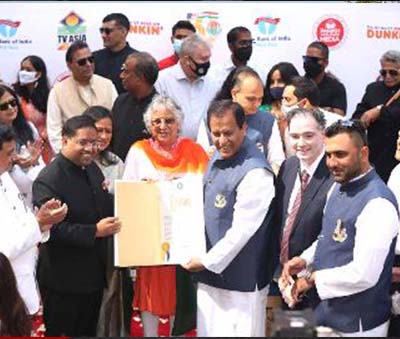 Hundreds of Indian-Americans as well as friends and well-wishers of the community had gathered at the venue to participate in the flag-hoisting. The day’s ceremony began with the playing of the American national anthem. Consul General of India Shri Randhir Jaiswal then hoisted the Tricolor as the Indian national anthem played along.
Hundreds of Indian-Americans as well as friends and well-wishers of the community had gathered at the venue to participate in the flag-hoisting. The day’s ceremony began with the playing of the American national anthem. Consul General of India Shri Randhir Jaiswal then hoisted the Tricolor as the Indian national anthem played along. Besides Jaiswal, those who addressed the gathering included Deputy CGI-New York Shatrughna Sinha, Captain Amandeep Singh Sandhu who is the only Indian American in the whole of the New York police department and first Sikh captain in the country, FIA board member Anand Patel who was representing Dunkin, one of the event sponsors, Jackson Heights representative in New York City Council Daniel Dromm, and district leader from Queens-New York Neeta Jain.
Besides Jaiswal, those who addressed the gathering included Deputy CGI-New York Shatrughna Sinha, Captain Amandeep Singh Sandhu who is the only Indian American in the whole of the New York police department and first Sikh captain in the country, FIA board member Anand Patel who was representing Dunkin, one of the event sponsors, Jackson Heights representative in New York City Council Daniel Dromm, and district leader from Queens-New York Neeta Jain. The celebration continued into the evening with FIA’s annual gala on board a yacht on the Hudson, which was attended by dignitaries, special guests and FIA members.
The celebration continued into the evening with FIA’s annual gala on board a yacht on the Hudson, which was attended by dignitaries, special guests and FIA members.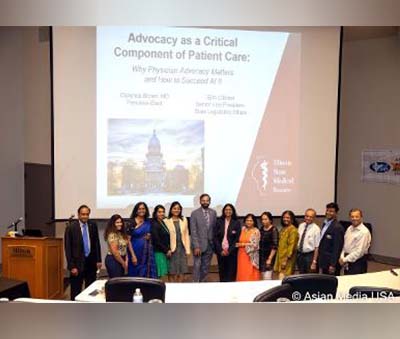 “On the occasion of the 75thIndependence Day of India, we the physicians of Indian origin serving every 7th patient in the United States, is excited to launch this unique and noble initiative in collaboration with Bitcare, ‘AAPI Blood Donation and Stem Cell Drive” in 75 cities across the United States,” Dr. Gotimukula added.
“On the occasion of the 75thIndependence Day of India, we the physicians of Indian origin serving every 7th patient in the United States, is excited to launch this unique and noble initiative in collaboration with Bitcare, ‘AAPI Blood Donation and Stem Cell Drive” in 75 cities across the United States,” Dr. Gotimukula added. Blood saves lives. Blood is needed every two seconds. Nearly 21 million blood components are transfused in the U.S. every year. While not everyone is able to donate blood, Dr. Gotimukula pointed out that only 37 percent of the country’s population is able to donate blood. On why she and the AAPI leadership chose this as a priority\, Dr. Gotiumuka said, “The 3rd Covid Wave is causing increased ICU admissions again. There is a dire need for blood. Your friends or family may need your blood someday. And this noble cause helps save many lives.”
Blood saves lives. Blood is needed every two seconds. Nearly 21 million blood components are transfused in the U.S. every year. While not everyone is able to donate blood, Dr. Gotimukula pointed out that only 37 percent of the country’s population is able to donate blood. On why she and the AAPI leadership chose this as a priority\, Dr. Gotiumuka said, “The 3rd Covid Wave is causing increased ICU admissions again. There is a dire need for blood. Your friends or family may need your blood someday. And this noble cause helps save many lives.” Describing the benefits of Blood Donation, Dr. Gotiumukula said, a single donation can save three lives. Each blood component of whole blood transfusion can help up to three different people. Pointing to the fact that Blood cannot be manufactured, The President of AAPI said, “Despite medical and technological advances, blood cannot be made, so donations are the only way we can give blood to those who need it.”
Describing the benefits of Blood Donation, Dr. Gotiumukula said, a single donation can save three lives. Each blood component of whole blood transfusion can help up to three different people. Pointing to the fact that Blood cannot be manufactured, The President of AAPI said, “Despite medical and technological advances, blood cannot be made, so donations are the only way we can give blood to those who need it.”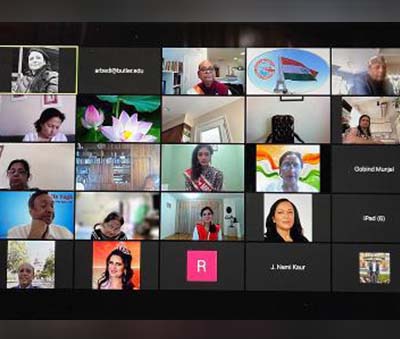 Organized by GOPIO New York, the oldest and the first Chapter of GOPIO Inetrnational, the colorful celebration of India’s Independence Day showcased the rich, colorful and the vibrant traditions of India, bringing them at the door steps of every household, as the audience from around the world were entertained with mesmerizing music, scintillating dance performances and inspiring speeches.
Organized by GOPIO New York, the oldest and the first Chapter of GOPIO Inetrnational, the colorful celebration of India’s Independence Day showcased the rich, colorful and the vibrant traditions of India, bringing them at the door steps of every household, as the audience from around the world were entertained with mesmerizing music, scintillating dance performances and inspiring speeches. Echoing the sentiments expressed by Prime Minister Modi, Ambassador Jaiswal focused on India’s achievements and about the goal to make inclusive development, harnessing the betterment of the sea, clean environment and next generation Indians and Digital India and women empowerment. He urged the Indian American community to “join in the celebrations as a way to stay connected with India as you continue to celebrate India and India’s friendship with the United States.”
Echoing the sentiments expressed by Prime Minister Modi, Ambassador Jaiswal focused on India’s achievements and about the goal to make inclusive development, harnessing the betterment of the sea, clean environment and next generation Indians and Digital India and women empowerment. He urged the Indian American community to “join in the celebrations as a way to stay connected with India as you continue to celebrate India and India’s friendship with the United States.” Lal Motwani, Founding President of GOPIO New York and Executive Trustee of GOPIO International, and the main organizer of the celebrations today, in his address, greeted Honorable India’s Consul General in New York, Randhir Kumar Jaiswal, other elected officials, including Rep. Tom Suozzi, New York Senators John Liu, Anna Kaplan, and Todd Kaminsky, as well as New York City Council Member Paul Vallone and Queens County District Attorney Melinda Katz, members and leaders of GOPIO from around the world who have joined us together to celebrate the 75th Anniversary of India’s Independence Day celebrations organized by one of the oldest and most active Chapter, the New York Chapter of GOPIO.
Lal Motwani, Founding President of GOPIO New York and Executive Trustee of GOPIO International, and the main organizer of the celebrations today, in his address, greeted Honorable India’s Consul General in New York, Randhir Kumar Jaiswal, other elected officials, including Rep. Tom Suozzi, New York Senators John Liu, Anna Kaplan, and Todd Kaminsky, as well as New York City Council Member Paul Vallone and Queens County District Attorney Melinda Katz, members and leaders of GOPIO from around the world who have joined us together to celebrate the 75th Anniversary of India’s Independence Day celebrations organized by one of the oldest and most active Chapter, the New York Chapter of GOPIO. Mr. Motwani thanked Dharmatma Saran for presenting a galaxy of star women from across the nation to perform as celebrate India today, and Beena Kothari, President of GOPIO-NY, Ajoy Dube, NFIA President and Gunjan Rastogi, Regional NFIA Vice President, NY for helping organize the colorful ceremony today.
Mr. Motwani thanked Dharmatma Saran for presenting a galaxy of star women from across the nation to perform as celebrate India today, and Beena Kothari, President of GOPIO-NY, Ajoy Dube, NFIA President and Gunjan Rastogi, Regional NFIA Vice President, NY for helping organize the colorful ceremony today.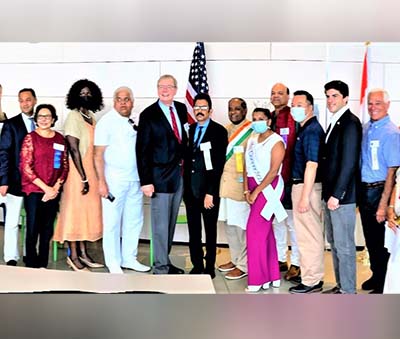 The Connecticut Chapter of the Global Organization of People of Indian Origin (GOPIO-CT) celebrated India’s democracy and the unity and diversity of India and Indian Americans, their achievements and contributions to India and the United States during the 74th anniversary of India’s Independence Day celebrations held at the Mill River Park, Stamford, CT on Sunday, August 8th.
The Connecticut Chapter of the Global Organization of People of Indian Origin (GOPIO-CT) celebrated India’s democracy and the unity and diversity of India and Indian Americans, their achievements and contributions to India and the United States during the 74th anniversary of India’s Independence Day celebrations held at the Mill River Park, Stamford, CT on Sunday, August 8th. In his proclamation Mayor Martin said that the Indian Independence was marked largely by non-violent resistance and civil disobedience and the Independence day is celebrated by the Indian Diaspora worldwide. The proclamation further noted that Stamford city will honor Indian community which is an integral part of city’s diversity, success and great future.
In his proclamation Mayor Martin said that the Indian Independence was marked largely by non-violent resistance and civil disobedience and the Independence day is celebrated by the Indian Diaspora worldwide. The proclamation further noted that Stamford city will honor Indian community which is an integral part of city’s diversity, success and great future. The program began with the singing of a patriotic song, followed by a welcome address by GOPIO-CT President Ashok Nichani. He said, “In spite of Covid Pandemic, we did very well with our activities including delivering food items to the frontline workers and food pantries in Connecticut, making cash contributions to food pantries, organizing many of our festivals and interactive talk on the Zoom, We also participated in the virtual Cancer Walk to benefit Bennet Cancer Center of the Stamford Hospital and continued to support the soup kitchen at the New Covenant Center.
The program began with the singing of a patriotic song, followed by a welcome address by GOPIO-CT President Ashok Nichani. He said, “In spite of Covid Pandemic, we did very well with our activities including delivering food items to the frontline workers and food pantries in Connecticut, making cash contributions to food pantries, organizing many of our festivals and interactive talk on the Zoom, We also participated in the virtual Cancer Walk to benefit Bennet Cancer Center of the Stamford Hospital and continued to support the soup kitchen at the New Covenant Center. “Our contributions are noted very well in the Health Care especially our doctors and nurses are frontline workers against Covid. We have also made outstanding contributions in hospitality, science, engineering and technology and education.” Said Dr. Abraham. “We are also not behind in political process and last year we have made history in the USA, not only by the election of Indian/African American Senator Kamala Harris as the Vice President and reelecting the four House of Representatives but also a record number of lawmakers to the state house,” Dr. Abraham added.
“Our contributions are noted very well in the Health Care especially our doctors and nurses are frontline workers against Covid. We have also made outstanding contributions in hospitality, science, engineering and technology and education.” Said Dr. Abraham. “We are also not behind in political process and last year we have made history in the USA, not only by the election of Indian/African American Senator Kamala Harris as the Vice President and reelecting the four House of Representatives but also a record number of lawmakers to the state house,” Dr. Abraham added.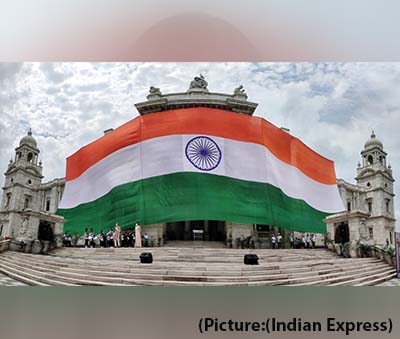 Since the issue relating to the Farmer’s plight was central to the concerns of the Indian diaspora which had gathered, this prohibition would prevent them from venting their sentiments and showing support to the cause of the farmers, as a result of which it left them no choice but to stay put at the location and voice their bitter disappointment over the unfair and undemocratic imposition of conditions which prevented them from participating in celebrating the joyous occasion of the Independence Day of India while at the same time expressing serious concern on the inaction of the sitting government to resolve the issue.
Since the issue relating to the Farmer’s plight was central to the concerns of the Indian diaspora which had gathered, this prohibition would prevent them from venting their sentiments and showing support to the cause of the farmers, as a result of which it left them no choice but to stay put at the location and voice their bitter disappointment over the unfair and undemocratic imposition of conditions which prevented them from participating in celebrating the joyous occasion of the Independence Day of India while at the same time expressing serious concern on the inaction of the sitting government to resolve the issue. On Thursday, Dallas Mayor Eric Johnson officially proclaimed August 15, 2021, as Indian Independence Day in Dallas during a public ceremony at City Hall with key Indian American leaders and members of IACEO Council.
On Thursday, Dallas Mayor Eric Johnson officially proclaimed August 15, 2021, as Indian Independence Day in Dallas during a public ceremony at City Hall with key Indian American leaders and members of IACEO Council. The Guiding Principle behind opening Dwarkamai’s “Centers of Spiritual Excellence” was to take the worship center closer to devotee’s homes based on request from devotees in an area rather than make devotees drive for hours to visit a worship center.
The Guiding Principle behind opening Dwarkamai’s “Centers of Spiritual Excellence” was to take the worship center closer to devotee’s homes based on request from devotees in an area rather than make devotees drive for hours to visit a worship center. Overall, the region’s population grew by 12.9% to 6.6 million, less than in past decades. Loudoun County led northern Virginia and the metro area with an increase of 38.4%, while in the Maryland suburbs of D.C., Howard County grew the most, 15.8%.
Overall, the region’s population grew by 12.9% to 6.6 million, less than in past decades. Loudoun County led northern Virginia and the metro area with an increase of 38.4%, while in the Maryland suburbs of D.C., Howard County grew the most, 15.8%. The figures released Thursday by the U.S. Census Bureau offered the most detailed portrait yet of how the country has changed since 2010 and will also be instrumental in redrawing the nation’s political maps.
The figures released Thursday by the U.S. Census Bureau offered the most detailed portrait yet of how the country has changed since 2010 and will also be instrumental in redrawing the nation’s political maps.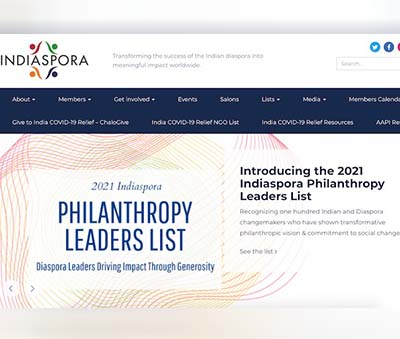 “It is incredibly inspiring to see so many philanthropists from our community who have translated their success into social impact,” said Indiaspora Founder Mr. Rangaswami. “These leaders serve as an example of the importance of generosity and remind us of the many issues that need our attention.”
“It is incredibly inspiring to see so many philanthropists from our community who have translated their success into social impact,” said Indiaspora Founder Mr. Rangaswami. “These leaders serve as an example of the importance of generosity and remind us of the many issues that need our attention.” The commemoration took place on Thursday, August 5th during a meeting with representatives of the Asian, Hawaiian and Pacific Islander community during which they discussed combating hate crimes against Asians, the White House said.
The commemoration took place on Thursday, August 5th during a meeting with representatives of the Asian, Hawaiian and Pacific Islander community during which they discussed combating hate crimes against Asians, the White House said.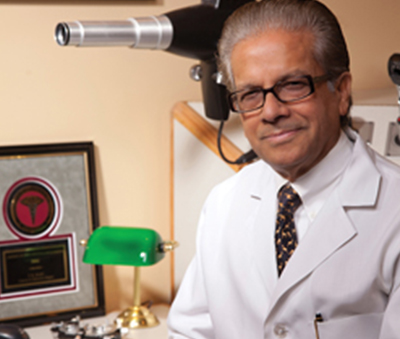 After all, India was the richest country when British came to its shores in 1700s. It is a free and open society with a viable parliamentary democracy and deep-rooted cultural and social traditions that have weathered the storms of religious and regional tensions and of a volatile polity.
After all, India was the richest country when British came to its shores in 1700s. It is a free and open society with a viable parliamentary democracy and deep-rooted cultural and social traditions that have weathered the storms of religious and regional tensions and of a volatile polity. Published in India and available on Amazon around the world, the book, laid out in leisurely 341 pages, chronicles the progress and accomplishments of Indian Americans in 16 essays — from politics, entrepreneurship, technology, medicine, to science, business, entertainment, social activism, etc.
Published in India and available on Amazon around the world, the book, laid out in leisurely 341 pages, chronicles the progress and accomplishments of Indian Americans in 16 essays — from politics, entrepreneurship, technology, medicine, to science, business, entertainment, social activism, etc. Prime Minister Narendra Modi launched digital payment solution e-RUPI, a person and purpose specific cashless digital payment solution, via videoconference on Monday, August 2, 2021. Speaking on the occasion, he said the eRUPI voucher was a symbol of how India was progressing by connecting people’s lives with technology. He expressed happiness that this futuristic reform initiative had come at a time when the country was celebrating the Amrit Mahotsav on the 75th anniversary of Independence.
Prime Minister Narendra Modi launched digital payment solution e-RUPI, a person and purpose specific cashless digital payment solution, via videoconference on Monday, August 2, 2021. Speaking on the occasion, he said the eRUPI voucher was a symbol of how India was progressing by connecting people’s lives with technology. He expressed happiness that this futuristic reform initiative had come at a time when the country was celebrating the Amrit Mahotsav on the 75th anniversary of Independence. “The generosity of the members of AAPI and Indian community has been unprecedented,” says Dr. Anupama Gotimukula, President of AAPI. “I want to thank the AAPI fraternity, for not only contributing $5 Million towards Covid Relief Funds, but has spent hundreds of hours in coordinating and disbursing the vital medical supplies to the most needed hospitals across India.”
“The generosity of the members of AAPI and Indian community has been unprecedented,” says Dr. Anupama Gotimukula, President of AAPI. “I want to thank the AAPI fraternity, for not only contributing $5 Million towards Covid Relief Funds, but has spent hundreds of hours in coordinating and disbursing the vital medical supplies to the most needed hospitals across India.”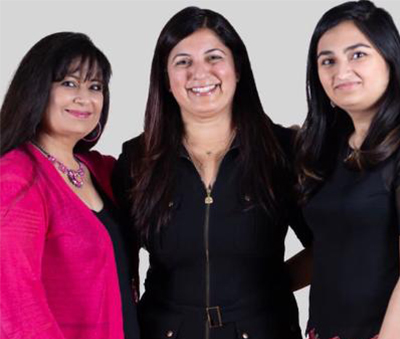 Urging women to join the Women Who Win in empowering the next generation of Women Leaders, its co-founder Dr. Manju Sheth states, “We are excited to launch a free Mentorship/ Career Exploration program with six very successful women who have given their gift of time to empower other women. I have always believed that we learn from each other and grow together. My sincere gratitude to our mentors for making this dream a reality for us at Women Who Win platform.”
Urging women to join the Women Who Win in empowering the next generation of Women Leaders, its co-founder Dr. Manju Sheth states, “We are excited to launch a free Mentorship/ Career Exploration program with six very successful women who have given their gift of time to empower other women. I have always believed that we learn from each other and grow together. My sincere gratitude to our mentors for making this dream a reality for us at Women Who Win platform.”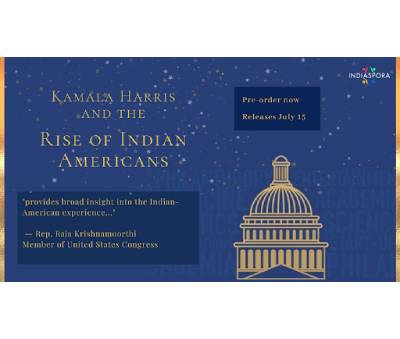 Edited by the Delhi-based veteran journalist and foreign policy analystTarunBasu, the evocative collection titled, “Kamala Harris and the Rise of Indian Americans,” captures the rise of the Indians in the US across domains by exceptional achievers like Shashi Tharoor, a former UN public servant-turned Indian politician, and top diplomats like TP Sreenivasan and Arun K Singh. Sixteen eminent journalists, business leaders and scholars have contributed essays to the timely and priceless volume, which charts the community’s growing and influential political engagement. The book was released July 15 by New Delhi-based publisher Wisdom Tree and is available in the U.S. via Amazon. Basu describes the book as an “eclectic amalgam of perspectives on the emerging Indian-American story.”
Edited by the Delhi-based veteran journalist and foreign policy analystTarunBasu, the evocative collection titled, “Kamala Harris and the Rise of Indian Americans,” captures the rise of the Indians in the US across domains by exceptional achievers like Shashi Tharoor, a former UN public servant-turned Indian politician, and top diplomats like TP Sreenivasan and Arun K Singh. Sixteen eminent journalists, business leaders and scholars have contributed essays to the timely and priceless volume, which charts the community’s growing and influential political engagement. The book was released July 15 by New Delhi-based publisher Wisdom Tree and is available in the U.S. via Amazon. Basu describes the book as an “eclectic amalgam of perspectives on the emerging Indian-American story.”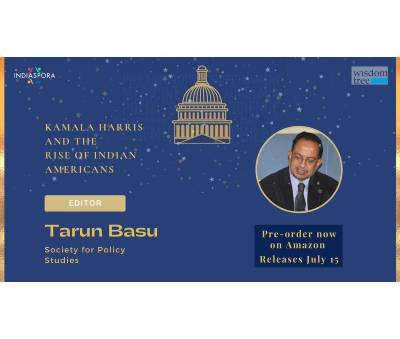 Basu has maintained a keen interest in the accomplishments of Indians abroad and has kept close touch with the community. The purpose of this anthology of essays edited by him is to bring to the global eye the unfolding saga of four million Indians in the United States. Indian Americans currently are just 1% of the US population but are expected to rise to 2% by 2030. Portraying the rise of the Indian American physicians as a strong and influential force in the United States, Ajay Ghosh chronicling their long journey to the United States and their success story, in a Chapter titled, “Physicians of Indian Heritage: America’s Healers” takes the readers to the times of Dr. AnandibaiJoshi, the first documented physician of Indian origin who had landed on the shores of the United States in 1883.
Basu has maintained a keen interest in the accomplishments of Indians abroad and has kept close touch with the community. The purpose of this anthology of essays edited by him is to bring to the global eye the unfolding saga of four million Indians in the United States. Indian Americans currently are just 1% of the US population but are expected to rise to 2% by 2030. Portraying the rise of the Indian American physicians as a strong and influential force in the United States, Ajay Ghosh chronicling their long journey to the United States and their success story, in a Chapter titled, “Physicians of Indian Heritage: America’s Healers” takes the readers to the times of Dr. AnandibaiJoshi, the first documented physician of Indian origin who had landed on the shores of the United States in 1883. “The nomination — and subsequent election — of the U.S.-born Indian origin Kamala Harris put the media spotlight on the small, but respected and high-achieving Indian American community,” writes Basu in his preface. “It is a fascinating and inspiring story of how an immigrant population from a developing country, with low education levels, became the most educated, highest-earning ethnic community in the world’s most advanced nation in almost a single generation,” he said, noting that Indian Americans have made their mark in almost every field, from the traditional trifecta of science, engineering and medicine, to the arts, academia, philanthropy, and, increasingly, politics.
“The nomination — and subsequent election — of the U.S.-born Indian origin Kamala Harris put the media spotlight on the small, but respected and high-achieving Indian American community,” writes Basu in his preface. “It is a fascinating and inspiring story of how an immigrant population from a developing country, with low education levels, became the most educated, highest-earning ethnic community in the world’s most advanced nation in almost a single generation,” he said, noting that Indian Americans have made their mark in almost every field, from the traditional trifecta of science, engineering and medicine, to the arts, academia, philanthropy, and, increasingly, politics. Dr. Kusum Punjabi the Chair of Board of Trustees of AAPI, who is the youngest to date to be holding this position in AAPI’s 40 years long history and serving patients in the Emergency Department, said “As the pandemic has exhausted all the resources, especially the lifesaving and much needed Blood across the nation and the world, AAPI is in the forefront, once again, spreading the message for the need to donate blood and save lives.”
Dr. Kusum Punjabi the Chair of Board of Trustees of AAPI, who is the youngest to date to be holding this position in AAPI’s 40 years long history and serving patients in the Emergency Department, said “As the pandemic has exhausted all the resources, especially the lifesaving and much needed Blood across the nation and the world, AAPI is in the forefront, once again, spreading the message for the need to donate blood and save lives.”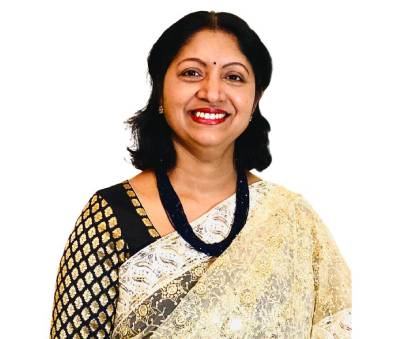 Dr. Krishan Kumar, a pediatric emergency medicine physician in East Meadow, New York and is affiliated with multiple hospitals in the area, quoting studies done on the need and usefulness of Blood said, “Blood donation helps save lives. In fact, every two seconds of every day, someone needs blood. Since blood cannot be manufactured outside the body and has a limited shelf life, the supply must constantly be replenished by generous blood donors.” The growing influence of physicians of Indian heritage is evident, as increasingly physicians of Indian origin hold critical positions in the healthcare, academic, research and administrative positions across the nation. We the physicians of Indian origin are proud of our great achievements and contributions to our motherland, India, our adopted land, the US and in a very significant way to the transformation of the Indo-US relations.
Dr. Krishan Kumar, a pediatric emergency medicine physician in East Meadow, New York and is affiliated with multiple hospitals in the area, quoting studies done on the need and usefulness of Blood said, “Blood donation helps save lives. In fact, every two seconds of every day, someone needs blood. Since blood cannot be manufactured outside the body and has a limited shelf life, the supply must constantly be replenished by generous blood donors.” The growing influence of physicians of Indian heritage is evident, as increasingly physicians of Indian origin hold critical positions in the healthcare, academic, research and administrative positions across the nation. We the physicians of Indian origin are proud of our great achievements and contributions to our motherland, India, our adopted land, the US and in a very significant way to the transformation of the Indo-US relations.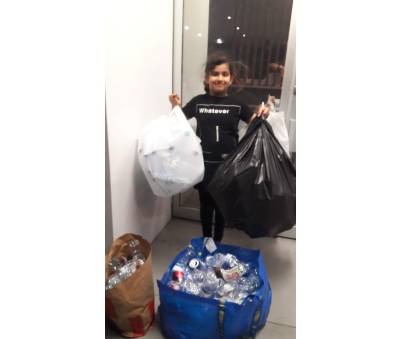 George Thomas, a senior manager at a hotel in Australia earlier, is currently the driver of the Australian luxurious Ghan Train, that runs all the way from Darwin to Adelaide for the last two years. I wished to hear the details from the horse’s mouth itself. Australian time is sixteen hours ahead of American Las Vegas time. I tried on the phone several times. When we finally got online, we were delighted and talked in detail for a long time. When the relevant parts of his dedicated charitable efforts were reflected in his thoughts, proudly thought of presenting this particular youngster and family among the few young people who had humanity in mind.
George Thomas, a senior manager at a hotel in Australia earlier, is currently the driver of the Australian luxurious Ghan Train, that runs all the way from Darwin to Adelaide for the last two years. I wished to hear the details from the horse’s mouth itself. Australian time is sixteen hours ahead of American Las Vegas time. I tried on the phone several times. When we finally got online, we were delighted and talked in detail for a long time. When the relevant parts of his dedicated charitable efforts were reflected in his thoughts, proudly thought of presenting this particular youngster and family among the few young people who had humanity in mind.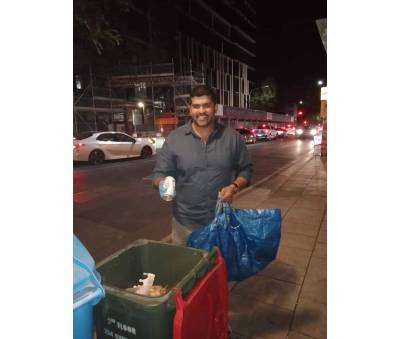 “I planned to start a school there. But how do those who have no food go to school? In addition, the children work and bring home around Rs. 200 per day. We have to make sure that we get that amount when we send our children to school. Then they said let’s leave it at school. We were willing to accept their terms.
“I planned to start a school there. But how do those who have no food go to school? In addition, the children work and bring home around Rs. 200 per day. We have to make sure that we get that amount when we send our children to school. Then they said let’s leave it at school. We were willing to accept their terms.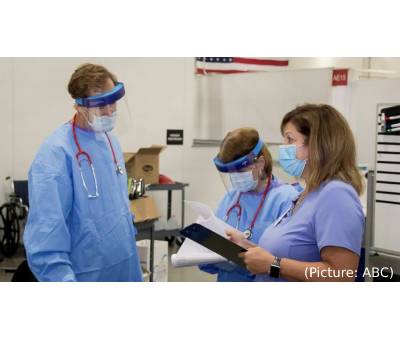 “So it really is, as (Rochelle) Walensky (Director of the Centers for Disease Control and Prevention) has said many times and I have said, it is really a pandemic among the unvaccinated, so this is an issue predominantly among the unvaccinated, which is the reason why we’re out there, practically pleading with the unvaccinated people to go out and get vaccinated,” said the chief medical adviser to President Joe Biden.
“So it really is, as (Rochelle) Walensky (Director of the Centers for Disease Control and Prevention) has said many times and I have said, it is really a pandemic among the unvaccinated, so this is an issue predominantly among the unvaccinated, which is the reason why we’re out there, practically pleading with the unvaccinated people to go out and get vaccinated,” said the chief medical adviser to President Joe Biden.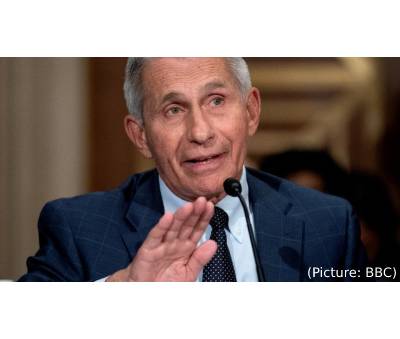 And as of July 23, the daily average of people becoming fully vaccinated was the lowest it had been since the end of January, the report said. Meanwhile, the CDC is also weighing the option of revising its Covid-19 guidelines to recommend that even fully vaccinated people wear masks in public, Fauci said.
And as of July 23, the daily average of people becoming fully vaccinated was the lowest it had been since the end of January, the report said. Meanwhile, the CDC is also weighing the option of revising its Covid-19 guidelines to recommend that even fully vaccinated people wear masks in public, Fauci said.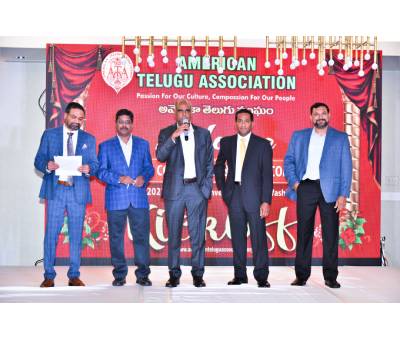 ATA President Boojala announced that this will be the major Telugu event in the post COVID world and was ecstatic to announce that Washington DC will host its first convention ever in capital area. Mr. Boojala quoted that all the Telugu people are a single family and invited one and all to this festival of Telugu’s. ATA President Elect MadhuBommineni encouraged all the women to come forward and play a pivotal role in making the conference a huge success.
ATA President Boojala announced that this will be the major Telugu event in the post COVID world and was ecstatic to announce that Washington DC will host its first convention ever in capital area. Mr. Boojala quoted that all the Telugu people are a single family and invited one and all to this festival of Telugu’s. ATA President Elect MadhuBommineni encouraged all the women to come forward and play a pivotal role in making the conference a huge success.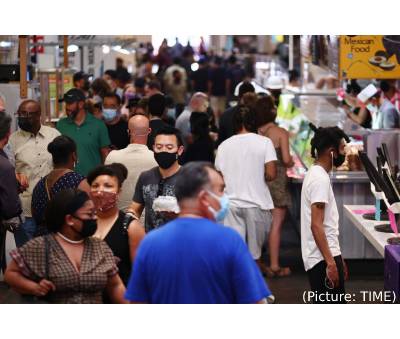 The U.S. Centers for Disease Control and Prevention (CDC) placed a significant roadblock to such tailored management when it changed its
The U.S. Centers for Disease Control and Prevention (CDC) placed a significant roadblock to such tailored management when it changed its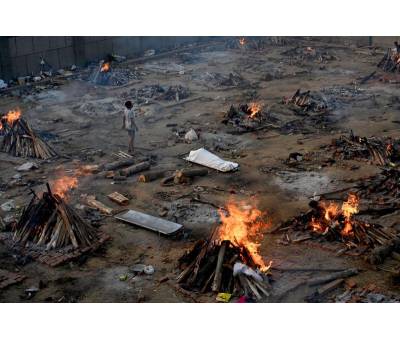 Rukmini S, a leading data journalist, has written that the numbers she’s gathered suggest a death toll closer to 2.5 million. A report from the Washington-based Center for Global Development think tank released Tuesday, July 20, 2021, studied data from three different sources, finding that excess deaths – a term public health experts use to describe mortality from all causes during a crisis that is above what would have been expected in ‘normal’ conditions – likely ranged between 3.4 million to 4.9 million.
Rukmini S, a leading data journalist, has written that the numbers she’s gathered suggest a death toll closer to 2.5 million. A report from the Washington-based Center for Global Development think tank released Tuesday, July 20, 2021, studied data from three different sources, finding that excess deaths – a term public health experts use to describe mortality from all causes during a crisis that is above what would have been expected in ‘normal’ conditions – likely ranged between 3.4 million to 4.9 million.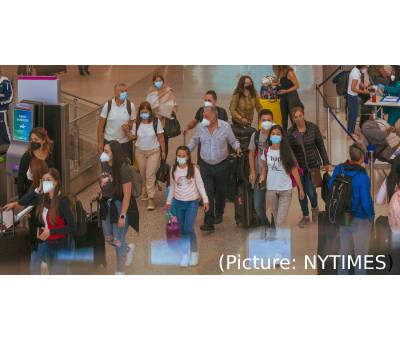 Angela Rasmussen, a virologist and research scientist at the Vaccine and Infectious Disease Organization at the University of Saskatchewan has pointed to a compelling preprint study out of China recently that showed people who were exposed to the Delta variant got sick fast. The study has found that people infected with the Delta variant are shedding way more virus, which could explain why it’s so contagious. Rasmussen says the good news is that it still transmits in the same way as the original strain, so all of those mitigation tools like masking and handwashing and social distancing – all of those still work to block Delta. And the vaccines are still highly effective against this variant.
Angela Rasmussen, a virologist and research scientist at the Vaccine and Infectious Disease Organization at the University of Saskatchewan has pointed to a compelling preprint study out of China recently that showed people who were exposed to the Delta variant got sick fast. The study has found that people infected with the Delta variant are shedding way more virus, which could explain why it’s so contagious. Rasmussen says the good news is that it still transmits in the same way as the original strain, so all of those mitigation tools like masking and handwashing and social distancing – all of those still work to block Delta. And the vaccines are still highly effective against this variant.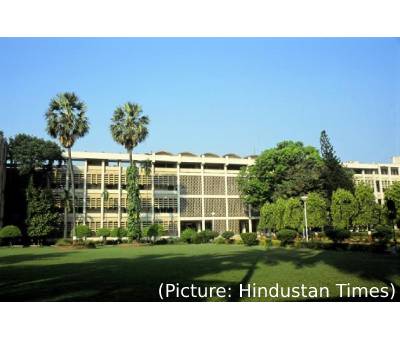
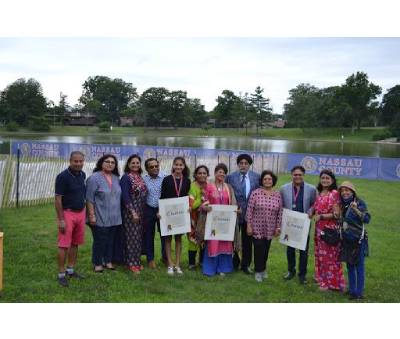
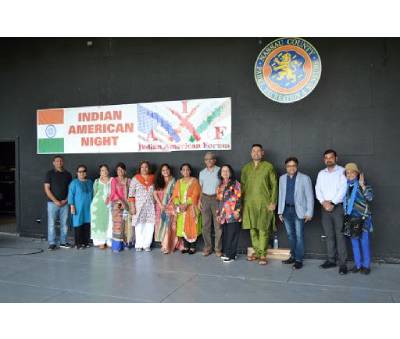
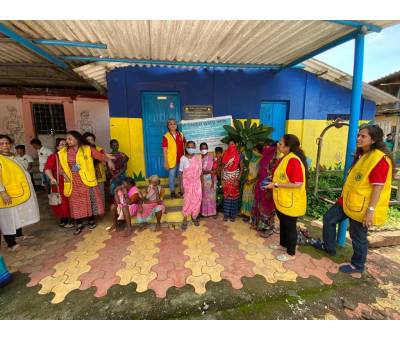 Women Who Win collaborated with the Indian Medical Association of New England to provide the shoes and educational materials on proper foot health. This summer, they had an outstanding response to their pilot program. They partnered with Lions Club of Juhu in Mumbai, to donate over 700 pairs of shoes to the women of the Adivasi village. These women were excited to finally have the right footwear to complete their work, and showed sincere blessings to our entire team. Co-founder Dr. Manju Sheth states, “The donation of shoes project to those who need it the most has been the fulfillment of the dream of our co-founders. As a physician,I have seen up close the devastation caused by multiple medical conditions including diabetes on the feet including ulcers ,gangrene leading to amputations.
Women Who Win collaborated with the Indian Medical Association of New England to provide the shoes and educational materials on proper foot health. This summer, they had an outstanding response to their pilot program. They partnered with Lions Club of Juhu in Mumbai, to donate over 700 pairs of shoes to the women of the Adivasi village. These women were excited to finally have the right footwear to complete their work, and showed sincere blessings to our entire team. Co-founder Dr. Manju Sheth states, “The donation of shoes project to those who need it the most has been the fulfillment of the dream of our co-founders. As a physician,I have seen up close the devastation caused by multiple medical conditions including diabetes on the feet including ulcers ,gangrene leading to amputations.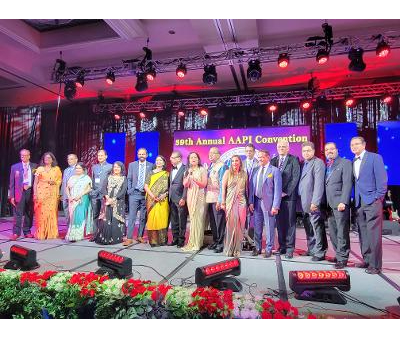
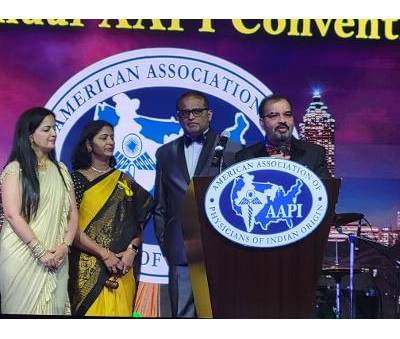 Dr. Kusum Punjabi, a very young and energetic leader of AAPI, assumed office as the Chair of Board of Trustees of AAPI on July 4th. The youngest to date to be holding this position in AAPI’s 40 years long history and the first person to go to medical school in the USA, Dr. Punjabi completed her undergraduate degree from Rutgers University in Biology and Economics and graduated with high honors as a Henry Rutgers Scholar. She, then completed MD/MBA program from Rutgers Robert Wood Johnson Medical School and Rutgers Business School.
Dr. Kusum Punjabi, a very young and energetic leader of AAPI, assumed office as the Chair of Board of Trustees of AAPI on July 4th. The youngest to date to be holding this position in AAPI’s 40 years long history and the first person to go to medical school in the USA, Dr. Punjabi completed her undergraduate degree from Rutgers University in Biology and Economics and graduated with high honors as a Henry Rutgers Scholar. She, then completed MD/MBA program from Rutgers Robert Wood Johnson Medical School and Rutgers Business School.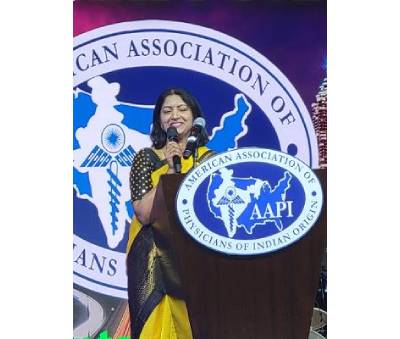 A recipient of several Community Service/Awards, Dr. Kathula wants to “Make AAPI a mainstream organization and work on issues affecting physicians including physician shortage, burnout, and credentialing, while leveraging the strength of 100,000 doctors at legislative level.” Another area, he wants to work is to “Encourage and engage next generation/young physicians in AAPI activities. While working closely with other physician organizations such as AMA.”
A recipient of several Community Service/Awards, Dr. Kathula wants to “Make AAPI a mainstream organization and work on issues affecting physicians including physician shortage, burnout, and credentialing, while leveraging the strength of 100,000 doctors at legislative level.” Another area, he wants to work is to “Encourage and engage next generation/young physicians in AAPI activities. While working closely with other physician organizations such as AMA.”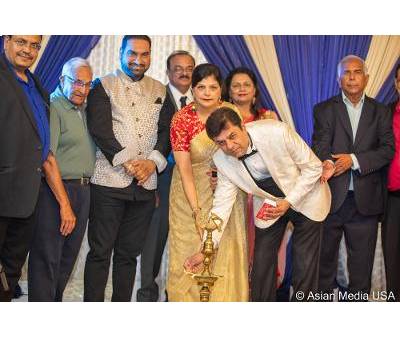 PPA Entertainment is run by Pinky and Dinesh Thakkar, Pratibha Jairath and Ashok Potdar. Pinky Thakkar is a successful female entrepreneur along with a number of talents that she has. A wife, a mother, a brand mother , a businesswoman, and an artist , Ms. Thakkar has been supporting various community initiatives for many years. Pratibha Jairath is a well-known name in the community for her super successful events and artistic skills. Ashok Potdar is known for his community service that he provides running a successful association helping hundreds of senior citizens.
PPA Entertainment is run by Pinky and Dinesh Thakkar, Pratibha Jairath and Ashok Potdar. Pinky Thakkar is a successful female entrepreneur along with a number of talents that she has. A wife, a mother, a brand mother , a businesswoman, and an artist , Ms. Thakkar has been supporting various community initiatives for many years. Pratibha Jairath is a well-known name in the community for her super successful events and artistic skills. Ashok Potdar is known for his community service that he provides running a successful association helping hundreds of senior citizens.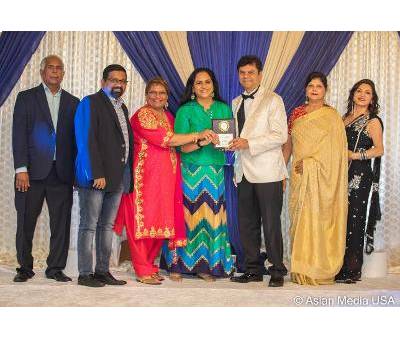 Some guests were recognized for their contributions in their respective fields that included Prachi Jaitly, Phani Krishna and Naveen Karna (AANA Team), Dr Madhu Uppal, Malhan, Ramesh, Dharam Punwani, Raju Bankapur, Shaila Khedkar, Sanjiv Gulati, Ali Khan, Hitesh Gandhi, Anil Loomba, Altaf Bukhari, Pinky Thakkar, Ashok Potdar, Neha Potdar, Pina Potdar, , Saif Ali, Suresh Bodiwala , Niranjan Nathwani, Chirag Shah, Raman Patel, Late Mr. Chitu Patel, Gaurang Ahivasi and Dipti Soni.
Some guests were recognized for their contributions in their respective fields that included Prachi Jaitly, Phani Krishna and Naveen Karna (AANA Team), Dr Madhu Uppal, Malhan, Ramesh, Dharam Punwani, Raju Bankapur, Shaila Khedkar, Sanjiv Gulati, Ali Khan, Hitesh Gandhi, Anil Loomba, Altaf Bukhari, Pinky Thakkar, Ashok Potdar, Neha Potdar, Pina Potdar, , Saif Ali, Suresh Bodiwala , Niranjan Nathwani, Chirag Shah, Raman Patel, Late Mr. Chitu Patel, Gaurang Ahivasi and Dipti Soni.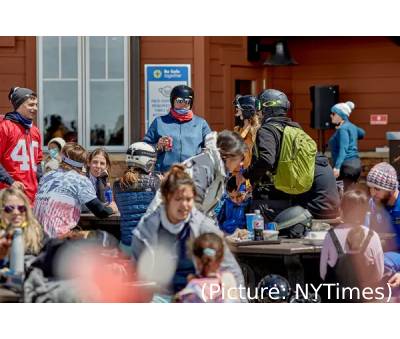 A hospital in Springfield, Missouri, ran out of ventilators to treat hospitalized COVID patients over the weekend, local media reported. The city of 160,000’s two hospitals were treating 213 COVID-19 patients as of Monday, up from 168 on Friday and 31 on May 24, the Kansas City Star said. “The trajectory that we’re likely to see is two different flavours of the pandemic in the United States, one in which it’s more of a problem in places where there’s a high level of unvaccinated individuals,” Amesh Adalja of the Johns Hopkins Center for Health Security told AFP.
A hospital in Springfield, Missouri, ran out of ventilators to treat hospitalized COVID patients over the weekend, local media reported. The city of 160,000’s two hospitals were treating 213 COVID-19 patients as of Monday, up from 168 on Friday and 31 on May 24, the Kansas City Star said. “The trajectory that we’re likely to see is two different flavours of the pandemic in the United States, one in which it’s more of a problem in places where there’s a high level of unvaccinated individuals,” Amesh Adalja of the Johns Hopkins Center for Health Security told AFP.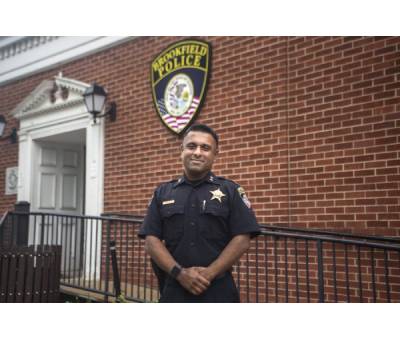 Asked about his India connection, Chicago-born Brookfield Deputy Chief of Police Kuruvilla, 38, told indica News that he used to visit Kerala when he was a kid. The last trip he made to India was in 2013 with his family. Kuruvilla’s wife Sibil is a licensed social worker that manages a community mental health center and they have two children ages 10 and 3. In an interview with indica News, Kuruvilla shared how he was always fascinated by law enforcement, admitted it was an unusual career choice for his community, and said that his first job as police chief would be getting body cameras on. There are thirty-one police officers in his department and three non-sworn personal staff. Excerpts:
Asked about his India connection, Chicago-born Brookfield Deputy Chief of Police Kuruvilla, 38, told indica News that he used to visit Kerala when he was a kid. The last trip he made to India was in 2013 with his family. Kuruvilla’s wife Sibil is a licensed social worker that manages a community mental health center and they have two children ages 10 and 3. In an interview with indica News, Kuruvilla shared how he was always fascinated by law enforcement, admitted it was an unusual career choice for his community, and said that his first job as police chief would be getting body cameras on. There are thirty-one police officers in his department and three non-sworn personal staff. Excerpts: